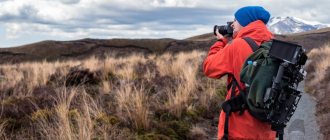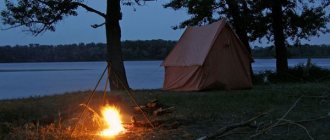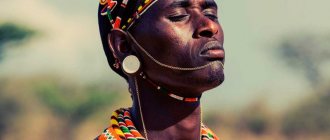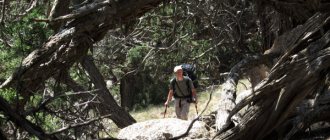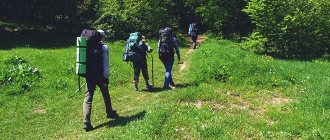General recommendations
A traveler's backpack should weigh as little as possible, otherwise the trip will be ruined. This is especially true for those who are not accustomed to carrying heavy objects. By getting rid of a couple of useless things, you will save energy and strength for a pleasant pastime.
For a trip to the forest with an overnight stay lasting 24 hours, take a backpack with a volume of 15 to 35 liters. Those who are going to travel for several days should have a backpack of at least 55 liters. The volumes, weight and contents of backpacks depend on the time of year.
If you are going to spend the night in the forest, take a tent. It will protect from bad weather, wind, and forest inhabitants. When the air temperature drops below +10 degrees, you will need a sleeping bag. The number of tents and their capacity is calculated depending on the number of people. For a small group, one tent may be enough; a large group should take several.
If you have to spend the night in the forest without a tent or in the cold, take a sleeping mat. A light rug will serve as a mattress and additional insulation, and it will be more comfortable to sleep on than on hard forest soil. The thickness is selected according to individual preferences, and the length is calculated so that it is at least 15 cm greater than the height of the person who plans to rest on it.
Difficulty level: yellow
We are not looking for easy ways!

Route “Marfino Ring” – 30.3 km – 1-2 days Pl.
Depot - Institute of Feeds named after. Williams - pl. Nekrasovskaya - Marfino - Fedoskino - T-34 tank museum - pl. Depot.* *circular route

Who will like it:
Those who are partial to local history and local attractions - there are a record number of them here!
A walk can easily turn into an excursion, where business and pleasure are so organically combined. “Smart” route for the “advanced”. Successfully combines a walk through forests and fields with a tour of historical and cultural attractions: the scientific town of the Institute of Feed named after. Williams, the Marfino estate, the Museum of Folk Crafts in Fedoskino, the Museum of the History of the T-34 tank. Route details Route “To the Talezh spring” – 26 km – 1-2 days Privalovo – Nemtsovo – Koroskovo – Olgino – Chirkovo – Talezh

Who will like it:
Connoisseurs of beauty and pilgrimages to holy places.
Local forests and fields will satisfy Russian longing, true friends and bright thoughts will charge you with energy that is so lacking in the city. The main attraction and goal of the route is the source of St. David in the village of Talezh. You will walk there through forests and fields, enjoying the views that are beautiful at any time of the year, especially in autumn. Route details Route “Lopatinsky quarries” - 37.4 km - 2-3 days Trofimovo - Usadishche - Ostashovo - Lopatinsky phosphorite quarries - Shifernaya.
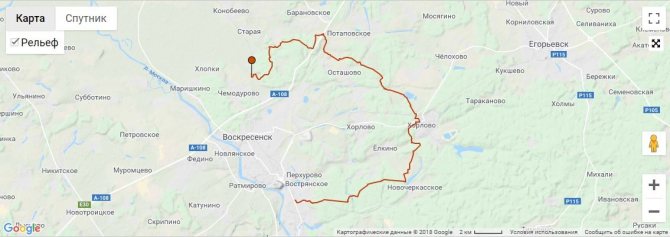
Who will like it:
Exploring the quirks of the local terrain in good company is a 100% cure for the blues and laziness for every tourist stuck at home.
The route near Voskresensk is remarkable, first of all, for the beautiful objects created in collaboration between man and nature on the vast territory of the Lopatinsky mine - not less than the largest phosphorite deposit in Europe. Route details Route “Zelenograd - Mendeleevo” – 18.2 km – 1-2 days
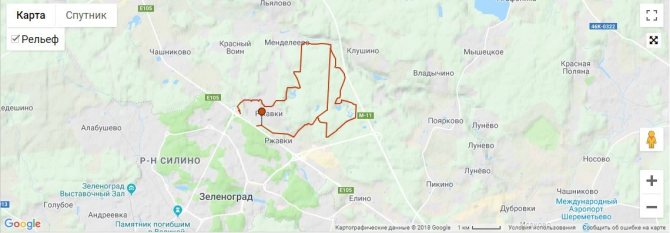
Who will like it:
With proper organization, it can turn out to be a very “atmospheric” weekend trip - the impressions of a day of walking are guaranteed.
A route near Zelenograd through places of military glory of the 1941 war: at the beginning and at the end you will encounter monuments, swamps and forest lakes, moss-covered trees that survived the war. “Radials” to the “Tank” monument and to the turn of 1941 should also be included in the plan. Route details
Choice of clothes
For hiking, choose light, preferably waterproof, sportswear that suits the season. The jacket must have a hood. In autumn, spring and summer, take a raincoat.
What clothes should you take on a hike: * A fleece jacket will keep you warm on a cool evening and protect you from insects. When you don't have one, you can take a knitted sweater, but it's not as comfortable. The advantage of fleece over other fabrics is its strength, density and ability to retain heat well. It is also worth wearing on a winter hike. * A seasonal hat will protect you from sun rays, insects, or keep you warm in the cold. * Warm socks, a couple of T-shirts, comfortable sleepwear, depending on the time of year. * Trekking shoes or any light and comfortable ones, always with textured soles. It would be great if it was water-repellent. Sneakers and sneakers are not suitable for the role of the main hiking shoes - they tear easily, have thin soles, which is why every pebble will be felt when walking. They are only suitable as a replacement pair.
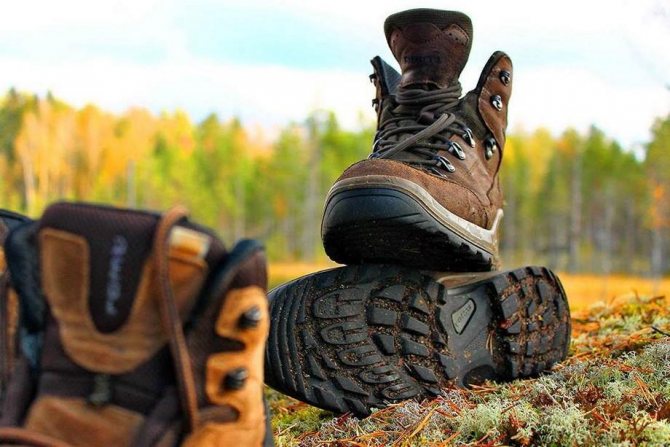
You should not wear things made of denim - they are heavy, can rub the skin, and when wet, interfere with walking.
One day hike in winter
Rules and recommendations.
For those who want to try and go on a winter hike with us, we will tell you how to prepare easier and better for a trip to the winter world. In crystal clear, transparent landscapes, in blizzard weather and on sunny days sparkling with snow.
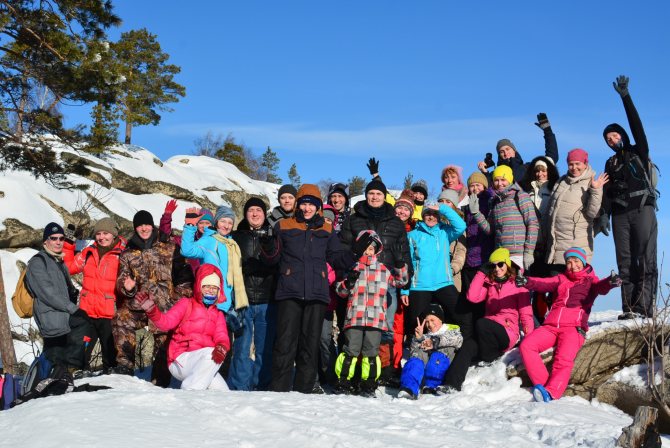
Type of holiday
Contemplation of nature has been and will be the key to peace and well-being. The winter forest is frosty air, the tart aroma of pine needles and resin, snowflakes sparkling in the sun, fabulous silence. And when in front of you are caps of pure snow sparkling in the sun, the effect is enhanced significantly. Incomparable pleasure!
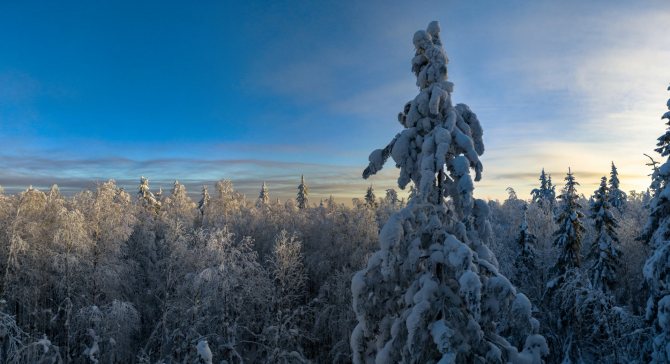
This is a kind of meditation against the backdrop of stunning landscapes. Fresh air, peace and quiet in the sun. Winter hikes strengthen the body and restore moral resources. A blush will appear on your face, you will forget about your ailments and have a wonderful rest among the enchanting winter nature!
Benefit
Don't forget, hiking is physical activity. Calm and intense, strengthening the respiratory and cardiovascular systems without putting unnecessary stress on the joints. Each hike is a conscious or unconscious training before further hikes.
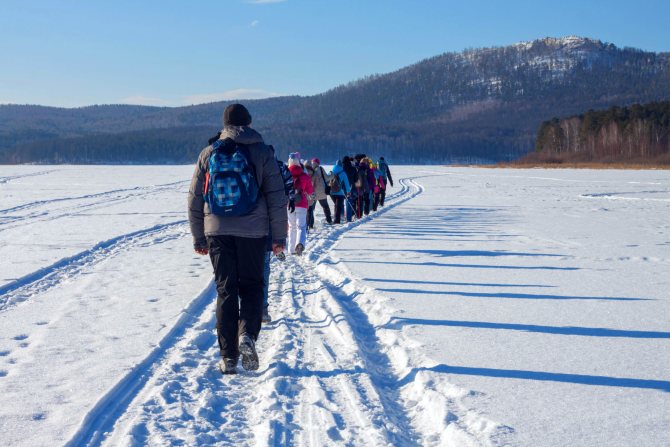
Participants gain insight into:
- Personal equipment and how to use it. Each item has many modifications and nuances of practical use in different situations.
- About public equipment and skills of use.
- Relief elements and terms.
- Interaction in a group.
- Adequately assess personal abilities and knowledge. So as not to overestimate or underestimate your skills on different terrain.
- Be able not to interfere with the manager at the stage of decision-making by the manager. There is a category of people who try to show everyone that they have their own opinion and try to impose it. This can make life difficult for the group and the trek leader.
- Be able to follow the instructions of the manager. It is important to understand that the monolith of a successful campaign is made up of bricks of everyone’s efforts, which must be laid consistently and with diligence.
As the tourist grows in experience, he discovers an ever-increasing field of knowledge for the world of hiking. The body adapts to long hours of vigorous activity, and subsequent hikes are easier physically and psychologically.
Where to go in winter?
In the same directions as in the summer! In winter, mountains and forests are transformed, the world becomes white - magical, and the views change beyond recognition. Tourist club “First Peak” every weekend we go out into nature for a day or two.
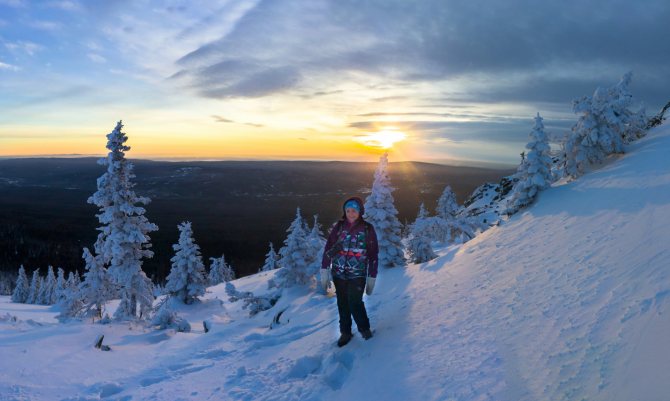
Popular destinations are the Southern, Middle and Northern Urals. The Ural nature is so rich in attractions that walking along them for several years will not be possible!
Preparing for the hike
To feel comfortable on a one-day winter hike, you need to follow a number of rules. They need to be treated responsibly and with common sense. Each participant takes with him: a lighter, matches, a personal first aid kit, a safety blanket, a flashlight with spare batteries, toilet paper, a seat (popper, hob), a folding knife, 2 ropes. Backpack 20-40l. It is useful to study the hiking area in advance, print out a map, and find out facts about local attractions.
Cloth
For one-day winter hikes, city clothes are suitable. But keep in mind that they are usually not designed for heavy use and can wear out quickly. Some new things, for example, made from fleece, are purchased at a second-hand store for 200-300 rubles. If finances allow, we purchase branded items in tourist stores - they are more practical and specialized.
- You need to dress in layers. Winter hiking involves physical activity. Give yourself the flexibility to add or subtract layers of clothing depending on the intensity of your effort, so you don't feel too hot or too cold.
- The first layer is thermal underwear or tight synthetic underwear. Function is to remove moisture from the body. Cotton linen does not transfer moisture well, so it will not work.
- Warm layer – fleece jacket. Fleece retains heat even when wet. If large minuses are expected, we take two sweaters.
- The top layer is a windproof jacket that easily removes moisture from the second layer of clothing. Windproof and waterproof pants.
- An additional layer is a down jacket. During heavy traffic it stays in a backpack. If you are in an open, windy area or in a parking lot, you should immediately put it on so as not to cool down.
- We put gloves and mittens on our hands. It is better to use gloves made of fleece, it keeps warm even when wet. Mittens - tops create an additional air layer to retain heat and protect from the wind. In case of a fire, we take simple canvas mittens so as not to tear or stain the gloves.
- To keep your feet warm and avoid blisters, use two pairs of socks. The first sock is a tight-fitting synthetic sock, the second is warm. Advanced option: buy thermal socks, trekking socks or membrane socks for winter.
- To protect your throat, use a winter multi-bandana - buff. It is light and does not allow wind to pass through. For windy weather, a balaclava is suitable.
- Shoes with synthetic insulation or inner boots to insulate the foot from the cold coming from the snow and ground. The legs should be as if in an air bag, and the fingers should move freely.
- Shoe covers with galoshes or tourist gaiters will save your boots from snow, so your feet will be dry and warm.

Eating right
As a rule, on day trips everyone takes their own food with them.
It is important to snack regularly to stay energized. Feeling hungry means that the body no longer has enough energy. Therefore, it is important to constantly have a snack on the go, and periodically drink hot tea at rest.
We have a hearty breakfast at home.
We take with us:
- Fatty, high-calorie foods. Wrap any sandwiches two or three times in paper to prevent them from freezing; hard-boiled eggs, bagged fried potatoes.
- Thermos with hot tea, 0.7-1 liter per person.
- Snack in your pocket: nuts, dried fruits, sweets, kozinaki, halva, chocolate.
- If there is a fire, you can take sausages, white bread, and marshmallows with you to fry.
Mobile phone
- We take a 100% charged one, if we take photographs with it, then a power bank will not be superfluous.
- When hiking, we turn on power saving mode and airplane mode so that the phone does not quickly run out of power when searching for a network.
- Keep your phone in your inside pocket. Because the battery quickly loses its charge in cold weather.
- In case of an emergency, call 112. We will get through to the number even without a SIM card, the main thing is that the phone picks up the signal from the tower of any owl operator. This number will connect you to the Ministry of Emergency Situations, ambulance or police - depending on the situation.
- We install a GPS program on the phone so that in an emergency we can understand the location on the map and understand which direction to move. A fairly simple and free application is “Soviet Military Maps”. It’s important to figure out how to use it at home, and test and strengthen your use skills on trips. The main thing is to load the desired section of the map into the phone cache. I recommend the OpenTopoMap. Another simple application is “MAPS.ME”. Both programs write a track, so you can easily follow it back, and have a “share location” function via SMS or social network.
Life hack, advice from experienced people:
- The elastic bands of socks, shoe covers, lacing, and cuffs should not be too tight so as not to impair blood circulation. Worse blood flow means more cold limbs.
- Be sure to take hygienic lipstick with you and periodically lubricate your lips. Anti-frost cream - perfectly protects hands and face from the piercing wind and cold.
- To protect your eyes from bright light, wear sunglasses.
- You need to get dressed before you get cold. When going out into an open, windy place, or stopping for a rest, you should immediately put on a warm jacket.
- Chemical heating pads are sold in tourist stores for arms and legs. Warm up to 40-60 degrees and heat for 6-10 hours. They cost 20-40 rubles, 300 rubles per pack.
- Try to move more often. To keep your fingers from getting cold, you need to constantly move them to circulate the warming blood.
- If your limbs begin to freeze, we urgently pump blood into them with vigorous circular movements. Hold your breath for a few seconds and tense all the muscles of your body, then relax, repeat this several times. Drink hot tea. Alcohol is contraindicated! Alcohol dilates blood vessels, and heat leaves the body faster.
- Money and documents (copy of passport, insurance policy) must be placed in a sealed package so that they do not become damp, for example, from sweat in the inner pocket.
- If you use a camera, don’t forget spare batteries or an accumulator, which will be in your inner pocket. If you don’t have spare ones, then don’t take pictures yet - remove the battery and put it in the inner pocket, take it out again for shooting.
Weather can be unpredictable and changeable, and can make serious adjustments to your route. A sudden storm can stop a group's movement for an indefinite period of time. It is important to be organized and disciplined when hiking in winter. The opposition of the participants to the general rhythm of the group entails inconvenience for the group: if you are late, you will either have to run headlong, or even spend the night at a cold station, for example.
Safety precautions
The abundance of colorful photos and enthusiastic reviews on the Internet creates the illusion of absolute safety. In fact, safety on a hike will depend on the qualifications of the leader and the training of the participants. So, simple rules that will increase the safety of your hike:
Get a good night's sleep before your hike.
Inform your loved ones where you are going and with whom, when you are returning, and the contact information of the trek leader.
You can't separate. The entire group must be within sight and earshot. If you suddenly want to go to the toilet, let the group leader know. The group will wait without any problems.
We monitor the markings of the trail (if there is one), the time, and the condition of other participants in the hike.
You can't drink cold water or eat snow. Sore throat is guaranteed - that's one thing, body temperature drops - that's two.
Carry extra gloves and socks with you.
We refuse to go to the forest for a day if you suffer from acute or chronic nephritis or sinusitis; if residual effects are observed after pneumonia, bronchitis, pleurisy. Recently suffered from acute respiratory viral infections, tonsillitis, pneumonia are also contraindications to the hike.
Following these simple rules and recommendations will allow you not to turn your hike into survival, and enjoy it to the fullest!
What else will be useful on a hike?
A list of necessary things compiled in advance will not allow you to forget something important. This is especially true for beginners. The first thing you need to put in your backpack is a first aid kit.
It should contain: * antipyretics; * dressings and disinfectants; * drugs for pain relief; * medicines for diarrhea and vomiting.
People with chronic diseases need to include in the list the medications they take regularly. Next on the list should be a flashlight, a lighter or a box of matches, a container of water, sewing thread and a needle, insect repellent and personal hygiene products. Take your passport or any identification document.
While camping, you will have to cook food, which will require utensils. It should be lightweight and reusable.

What to take for a small tourist group: * at least one deep bowl, ladle; * kettle with a volume of 5-7 liters; * medium-sized frying pan; * mugs, preferably made of plastic, according to the number of people; * knife in a case; * spoons, forks if desired; * kettle; * bowls.
Meshchera forests: hike Tugolesye - Krivandino

Every person has heard about Meshchera at least once or, perhaps, remembers Paustovsky’s works about these beautiful places from his distant childhood.

At the beginning of October we had a traditional two-day weekend hike.
No matter how hard I tried, the photographs only partially convey the whole atmosphere, but even so you can see that the Meshchera forests are so beautiful and surprisingly attractive.
The hike turned out to be easy and relaxed, but nevertheless very eventful and interesting. A total of 25 km covered. On the first day - 10 km, on the second - 15 km.
Group: 4 people.
Day 1
2. Time 10:00. Just got off the train. An unplanned snack and off you go.
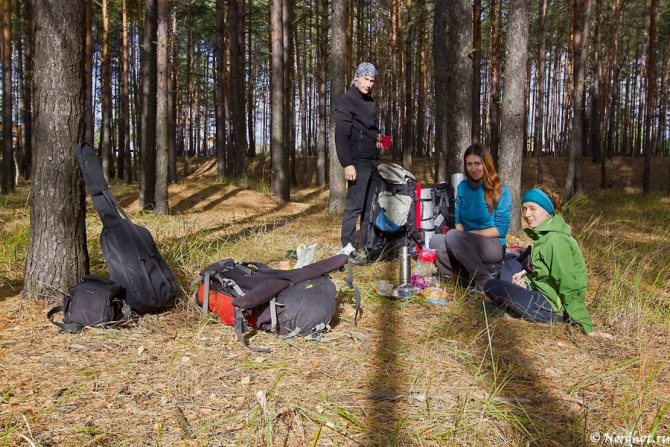
3. The weather is beautiful, sunny, although a little windy.

4. But we didn’t even go 2 km, again an unplanned stop. Well, how can you pass by this?
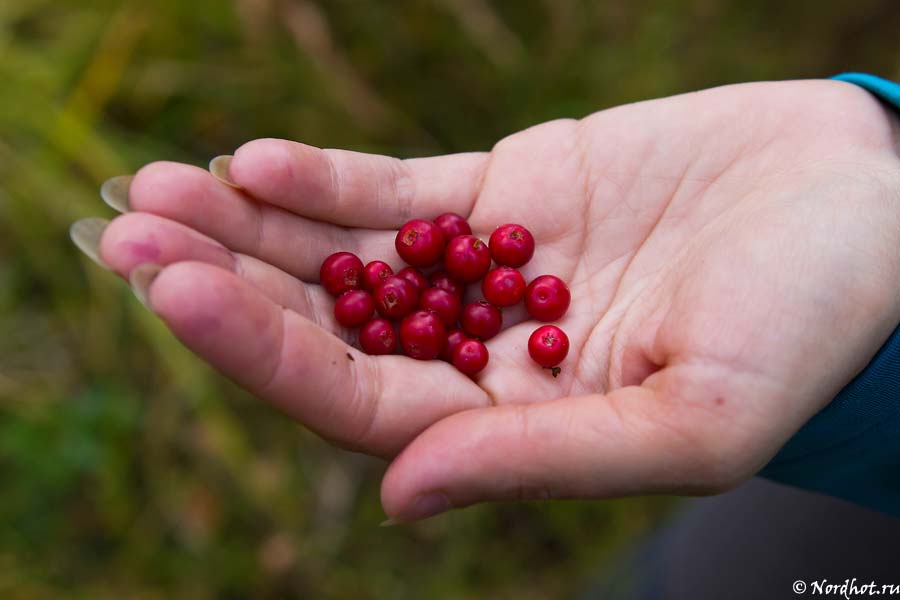
5. A lot of overripe blueberries. You can collect endlessly, practically without leaving one place.
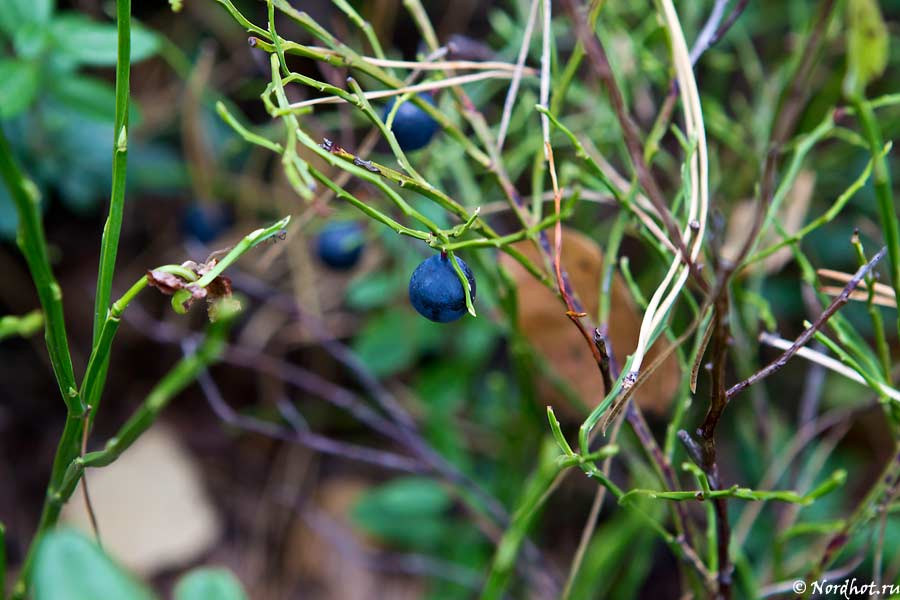
6
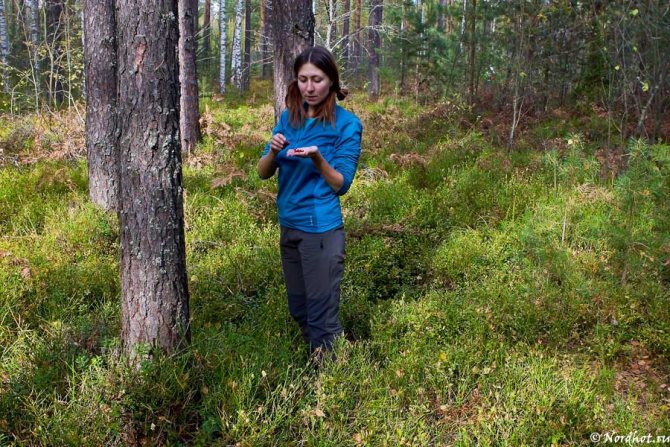
7. There are few mushrooms this year. They were not specially collected, although mushroom pickers were encountered several times.
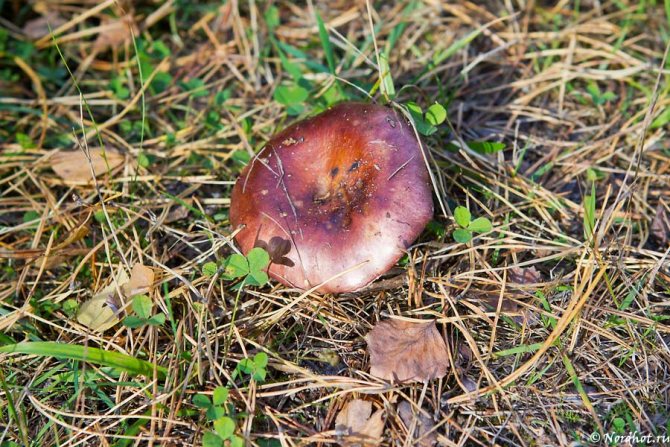
8
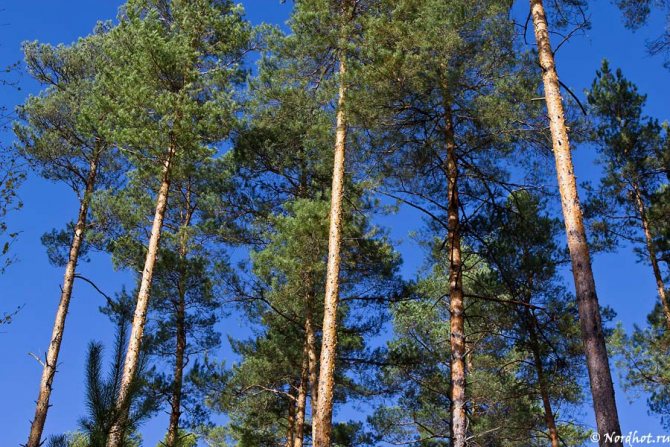
9. The power line is always a good reference point. But finding the right path to the side is not so easy, especially if no one has walked along it for a long time.
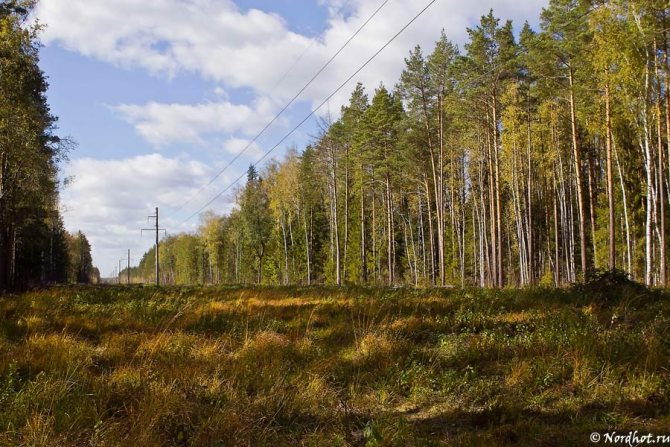
Having walked about 300 meters along the power line and still not having found the path we needed, I had already decided to follow the azimuth, as is done in such cases. But suddenly Masha noticed a barely visible path going in the direction we needed. But the joy was short-lived. The path disappeared as suddenly as it appeared. There is a pine-spruce forest around and moss underfoot.
10. But Masha is still happy.

11. Vasya is dreaming about something.
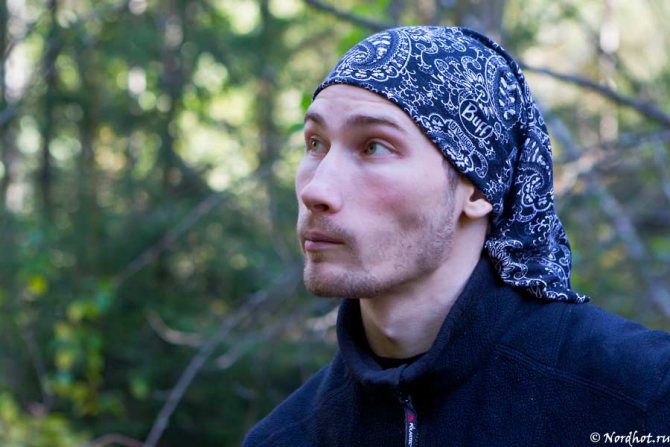
12. And Ira thought.
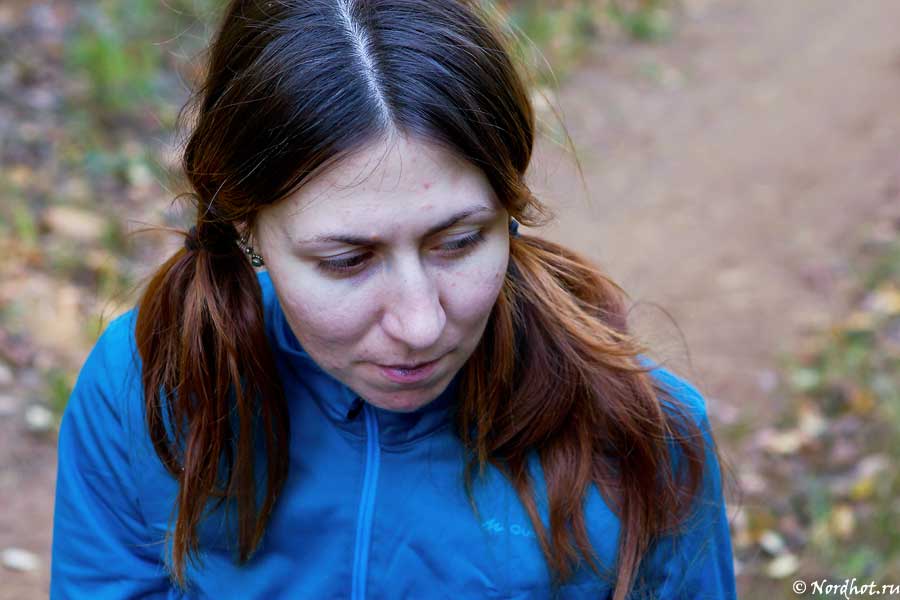
13. A little less than a kilometer, and we came out onto the road. Well, who would have thought that she would be so cool! Without saying a word, everyone called it “forest avenue.”
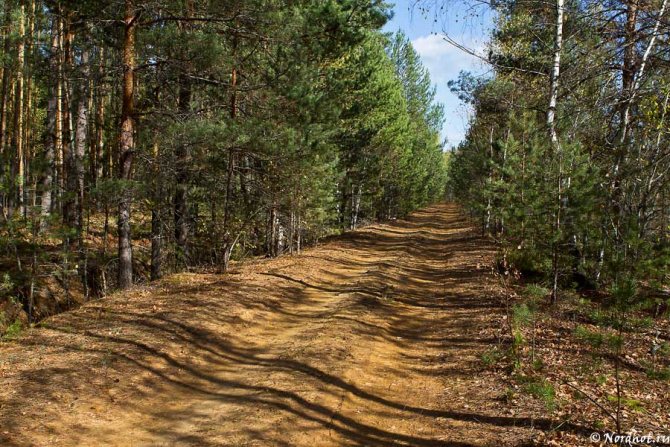
14. Northern moss grows along the roadsides.
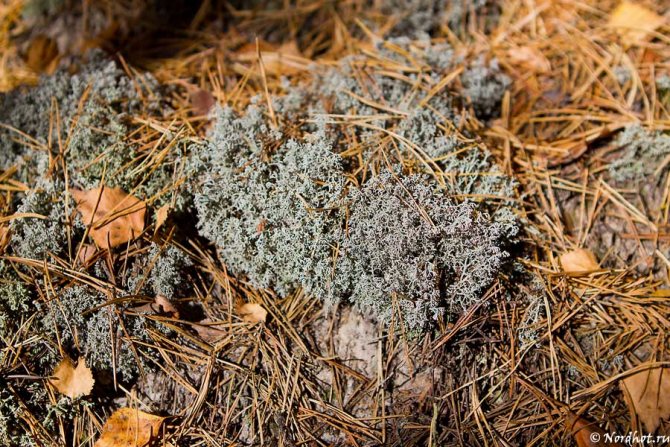
15
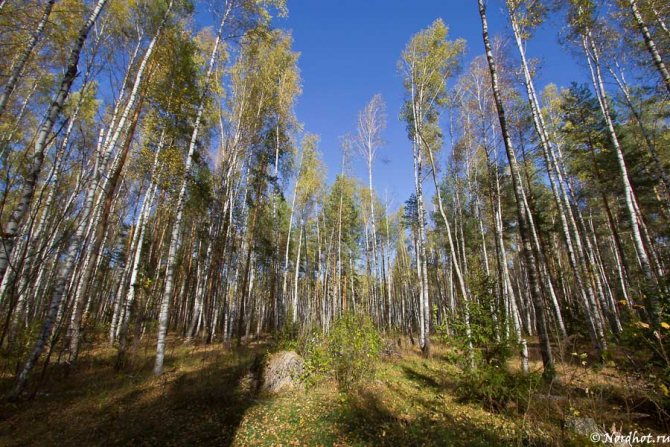
16
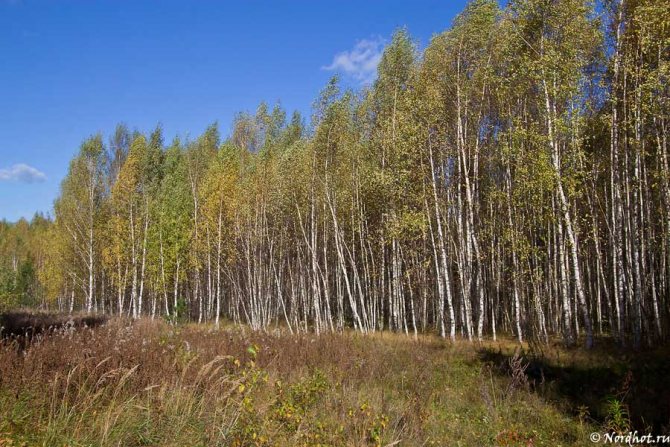
17
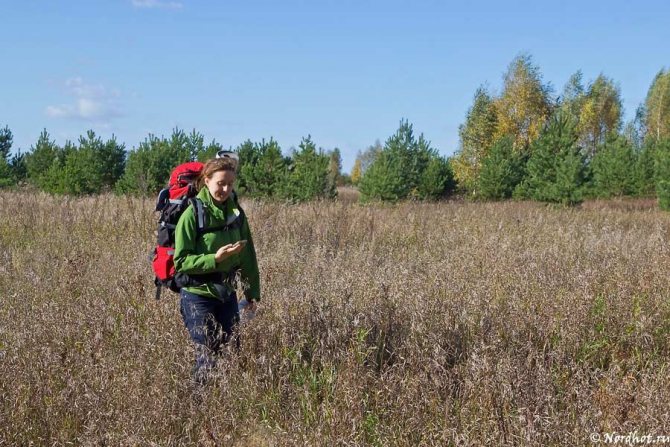
We passed the village of Zakharovka. But, obviously, only one name remains from it. Perhaps it remained somewhere to the side, but, in any case, neither roofs nor any ruins were seen.
14:00, time for lunch, having had a snack and rest, we moved on.
18. In close proximity to the river bank. There is a dirt road across the fields.

19. The river is very winding, and the road cuts off all its bends and only sometimes comes to the shore.
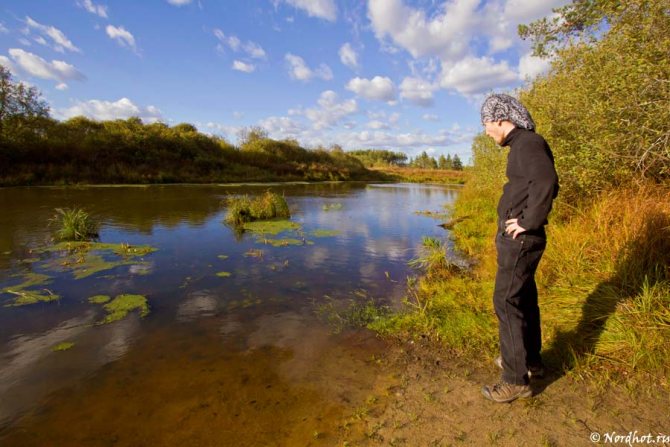
20. But the river is extremely beautiful, and we will see it more than once.
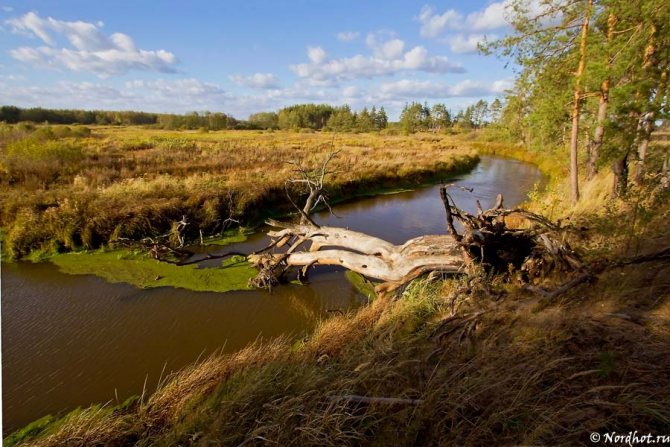
21

22. In some places you can still see the consequences of severe forest fires during the hot summer of 2010. Dry and half-burnt tree trunks are not uncommon in Meshchera.
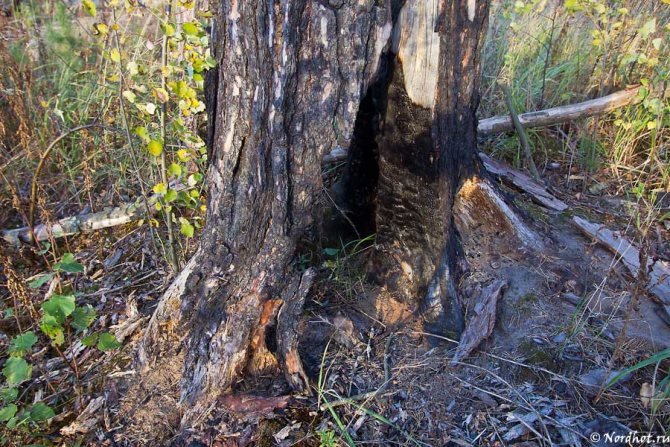
23. Today it was planned to cross the river and spend the night near it, but on the other bank. And so, in search of a convenient place for fording, we moved along the shore.

In principle, you could go anywhere. The depth is just above the knee, there is no current at all. But Irina’s navigator showed a pedestrian bridge a few hundred meters away from us. Well, we need to check.
24. And as it turned out, not in vain. We found a designated parking spot not far away. There is a table, benches, a roof and even some wood for the fire. But due to the possibility of driving here by car, it was extremely littered. Is it really so difficult to take everything you brought from the forest?
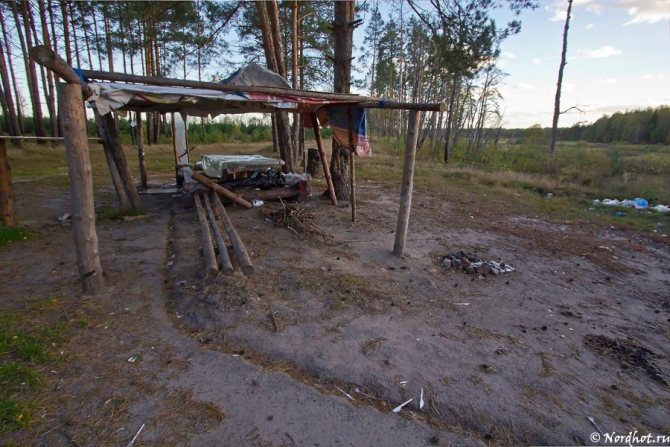
25. Nearby is a steep sandy shore

26. and a bizarre bend of the river. Here it turns as much as 180 degrees.
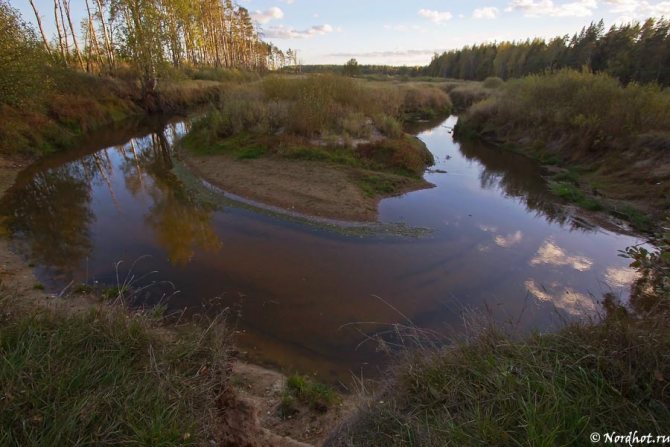
27. A pedestrian bridge was also found. It was a simple log.
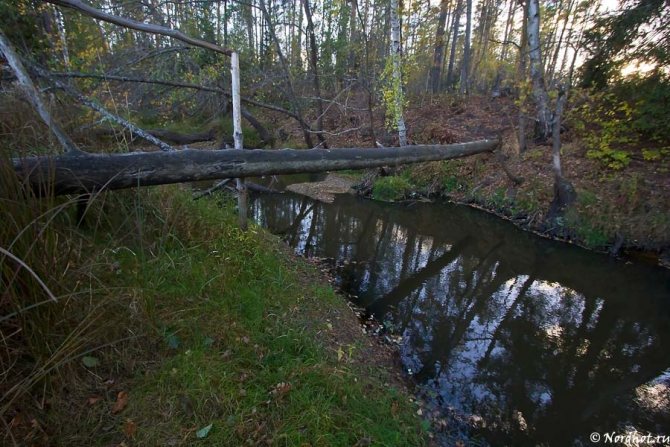
Those who didn’t want to get their feet wet climbed over the log. Not far away we found a small flat place among the pine trees, where we stopped for the night.
Day 2
At night it was just below zero. There is frost in the lowlands near the river. But the rising sun quickly warmed the air.
28. Dawn. The second day of our hike through the Meshchera forests has arrived.

29

It didn't take long to get ready. At half past nine we left and soon crossed the road leading to the village of Misheronsky and the city of Roshal, and approached White Bordukovsky Lake.
30
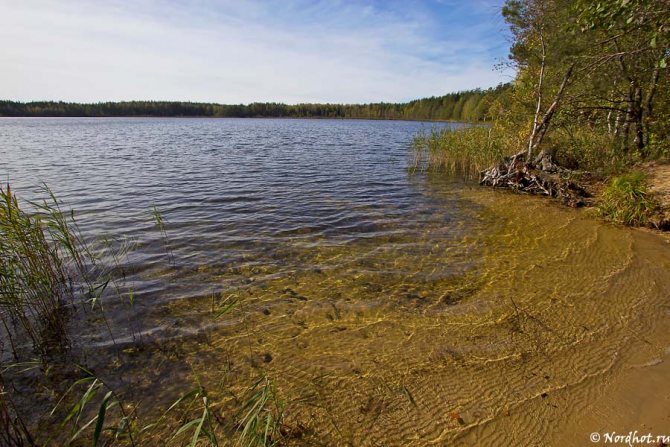
To the side of the shore there are several buildings, a large clearing and a volleyball court. I can imagine how many people come here in the heat. But now it’s autumn, it’s already cool, there’s no one on the shore except us.
31. The bottom is sandy, the water is clear.

32
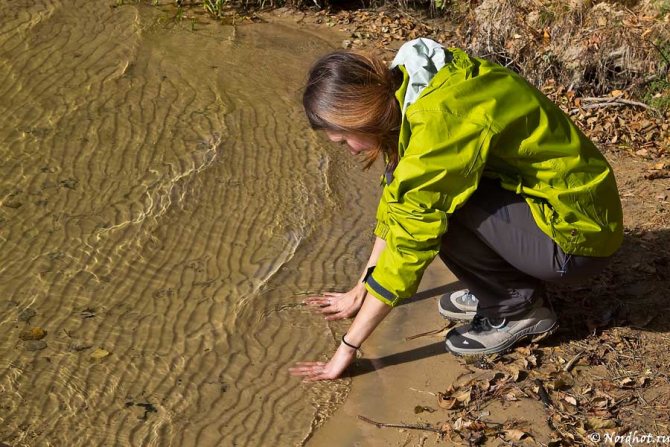
33
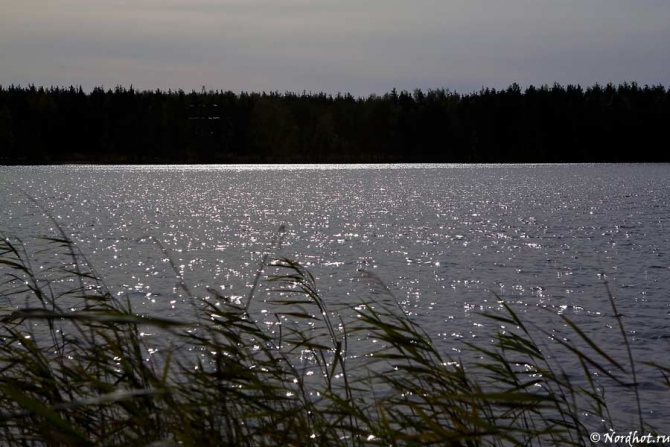
34. One and a half kilometers from here there is another lake.
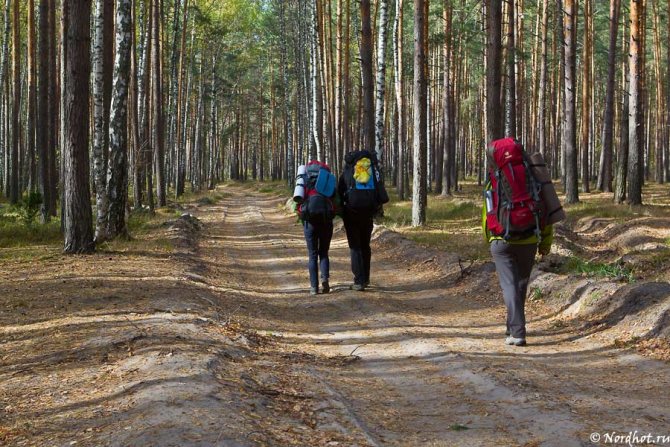
35. In contrast to the first, this is called black.
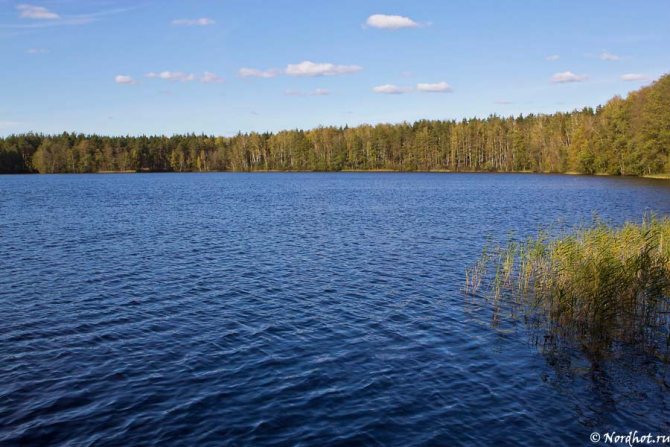
36. And here's why:
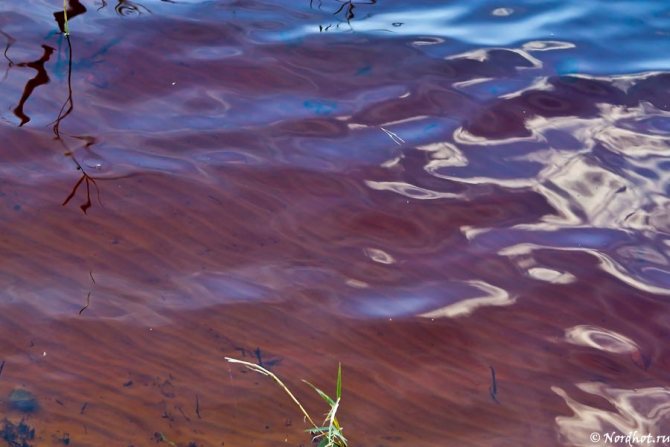
Peat water creates a dark red tint, and it looks like oil has been spilled on the surface. And yet Meshchera is more than just a forest. These include fields, rivers, and, of course, lakes.
37. The place was so cool that I didn’t want to leave!
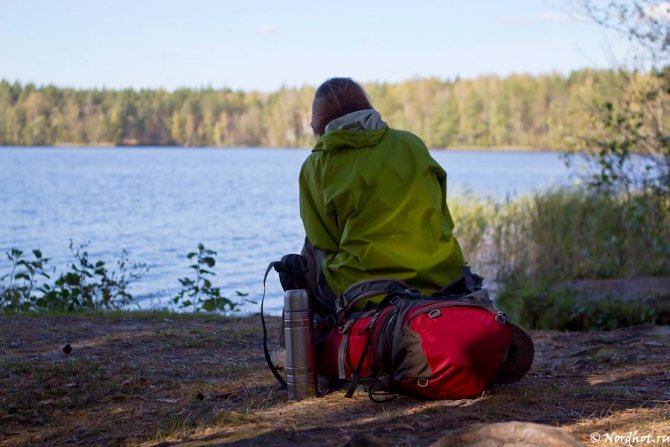
38
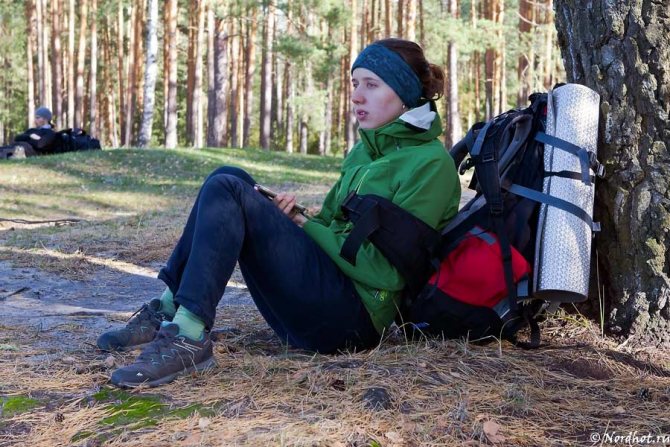
39
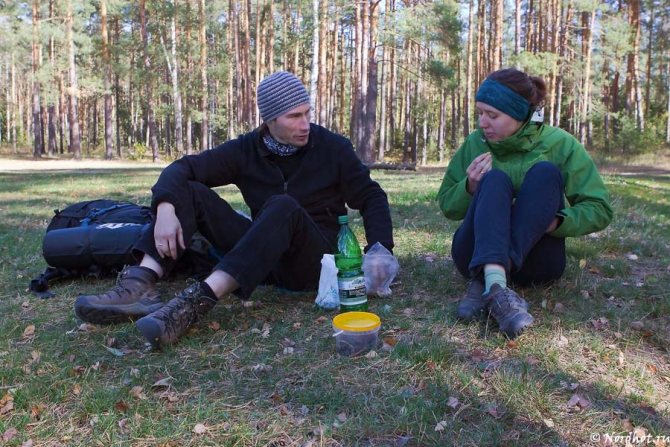
40
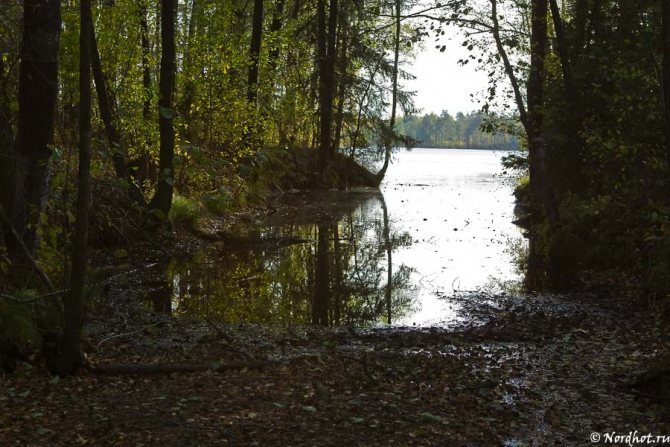
41
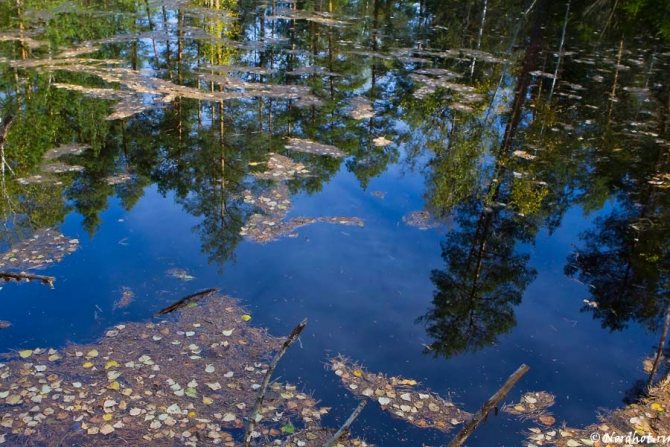
42. Due to its greater remoteness, this lake is less developed by fishermen and vacationers, but parking spots along the banks are common. One of them has a bungee on it.
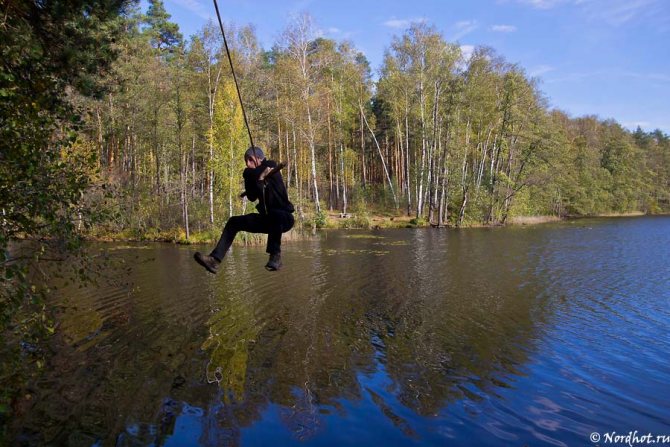
43. No matter how much I would like to stay here longer, I have to go in order to return in time this evening. However, I remember this beautiful place, and maybe someday we will find ourselves here again.
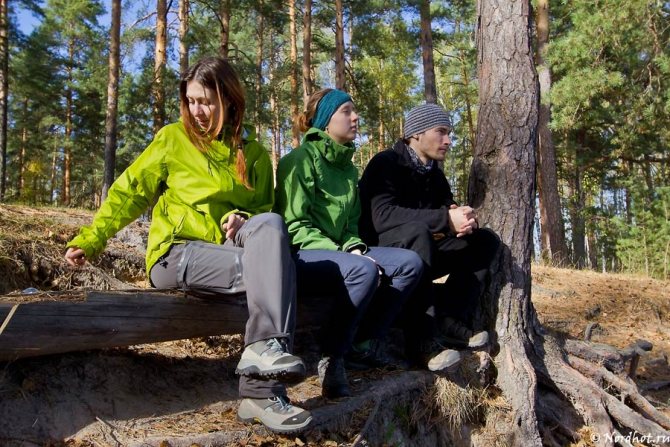
44
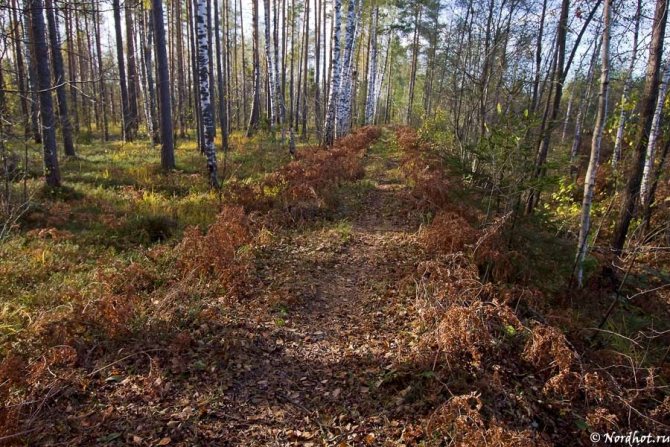
The path along the artificial embankment from the lake led us to the railway, or rather to everything that was left of it. The Krivandino-Misheronsky railway line was previously used to transport peat. Now there is no mining - there is no need for a road. It was dismantled not long ago, but we will now see what is left.
45. We had lunch, sitting right on the former railway. ways.
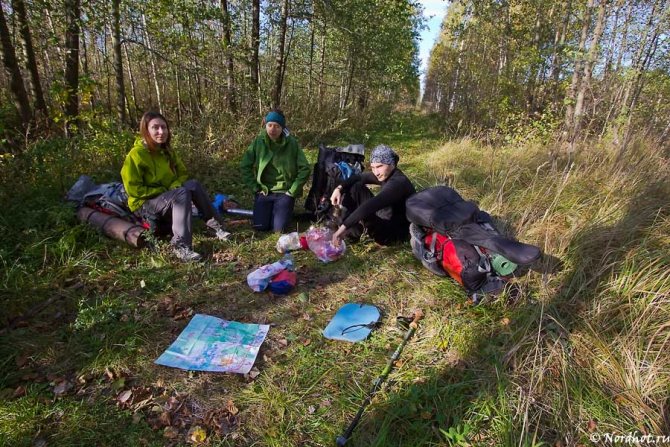
46. The rails were removed, but what remained was a clearing, straight as an arrow, with a small path and sleepers across it.
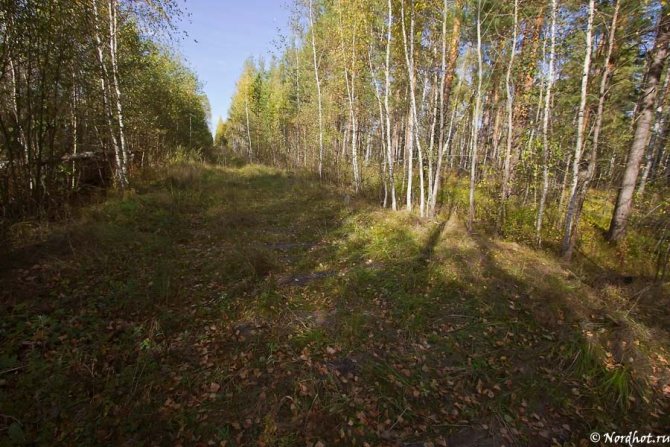
47
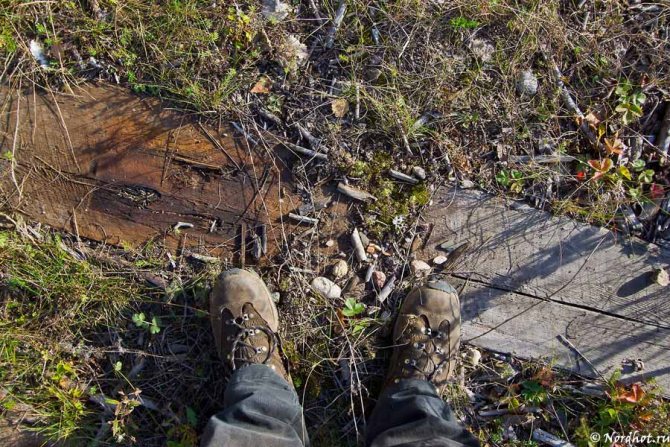
48. The road here was not a narrow-gauge one, which is often found in these places, but of ordinary width.
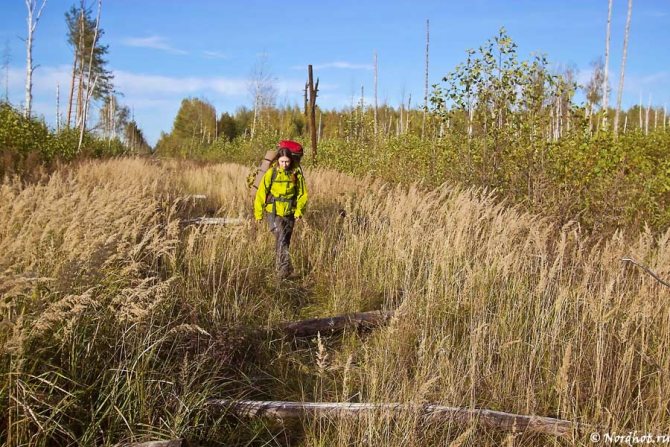
49. In many places, the embankment is already littered with trees that have dried out or burned from forest fires.
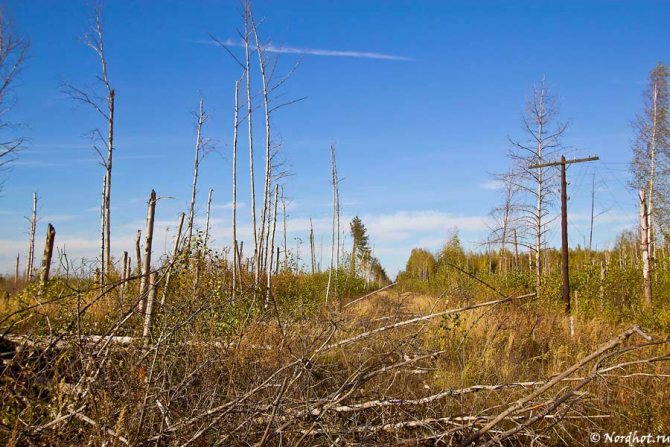
50. Kilometer column. We still have 7 kilometers to Krivandino.

51. We have already seen the “Prospect”, and this is indeed a “highway”, completely crossing the Meshchera forests.
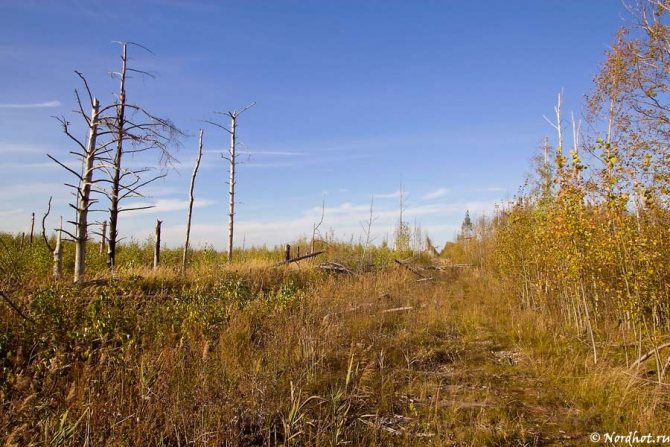
52

53. The closer we got to the village, the more habitable the places became. Sometimes an ordinary country road ran along the embankment across the field.
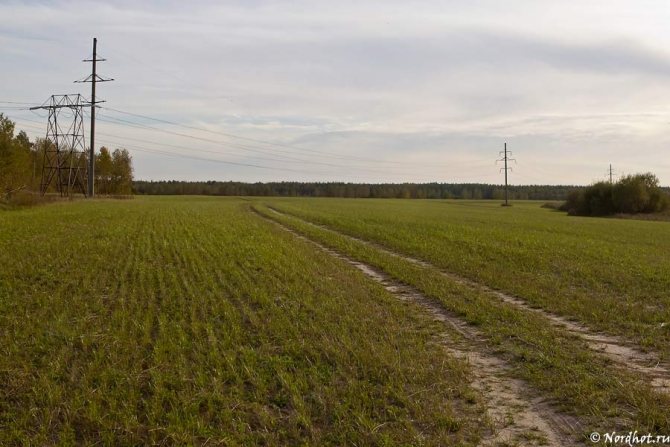
54. “And the fishing is already good here.”
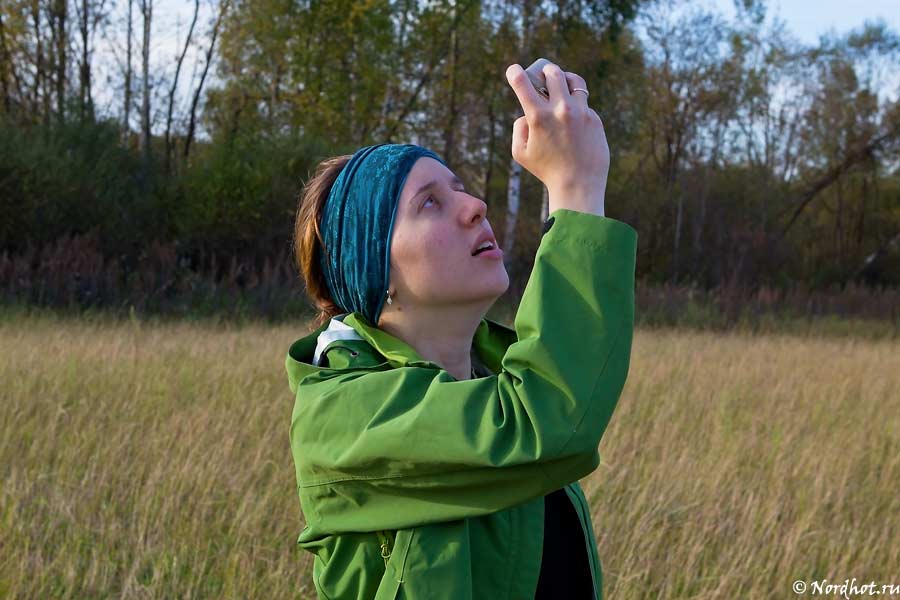
55

56. An invisible tourist on vacation.
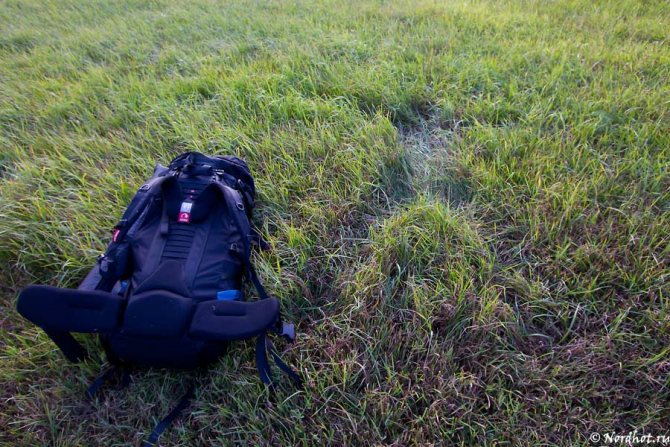
57. In some places there are still rails, but this is rather an exception.
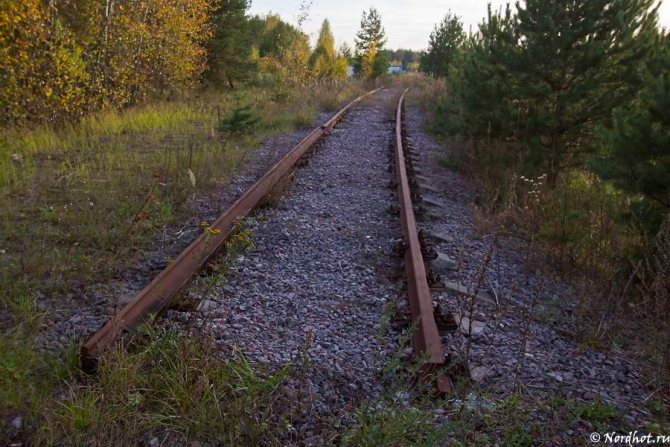
58. Bridge over the river. Fields in front of the village of Krivandino. There is already a well-trodden road here.
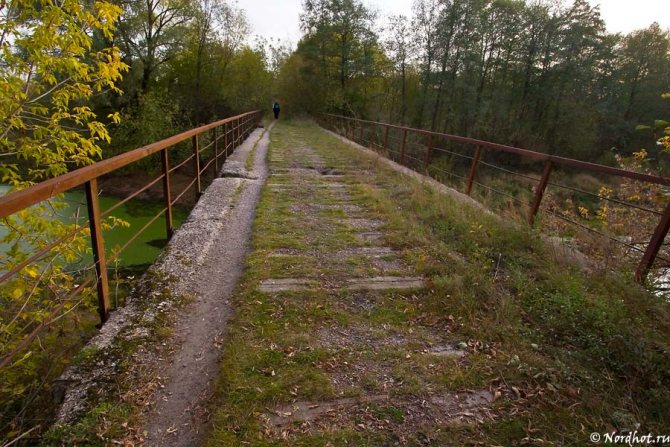
59. And then the Meshchera forests seemed to part. Houses appeared across the bridge, just a little way to the station.
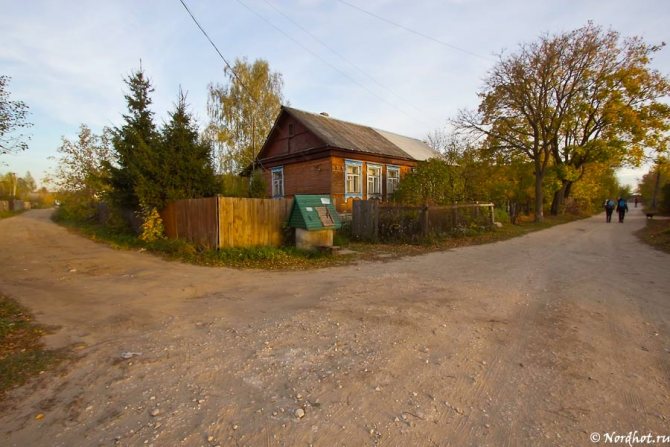
60. As in our last trip, the last kilometer before the finish, we were in a hurry to catch an earlier train. I really didn’t want to waste an hour and a half. So, this time we made it.
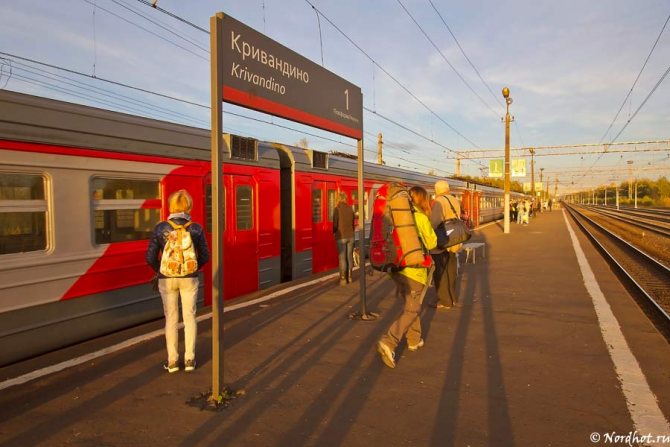
Of all the weekend hikes, this is by far the most interesting. I don't even know what it can be compared to. All PVDs are interesting in their own way, but this one is especially interesting.
The intensity of the route, 10-15 km a day with a backpack, turned out to match the mood of the team. Of course, it was possible to walk more, but from such small hikes you want not only sports. You can walk slowly, not get tired and, at the same time, stay somewhere longer if you so desire.
I especially liked the region. Meshchera forests are unusual. I want to return to these interesting and beautiful places more than once.
More about hiking in the Moscow region:
Lesodolgorukovo - Novopetrovskoye Zosimova Hermitage - Vorsino Hike: Antsiferovo - Manyenkovo Lakes - Guslitsky Monastery - Podosinki Hike to the ancient forest village of Shatur
Food
Remember - for a hike to be successful, we always take enough food. Having put the necessary items of clothing and cutlery into your backpack, begin to fill it with food products that combine: * shelf life without special conditions; * light weight; * high calorie and nutritional value.
Canned food is a good option for camping, but you can’t call it light because of the tin cans. Two tin jars are enough for one tourist. Use some jerky and veggies to make a wonderful soup. For a quick dinner or lunch, use a simplified option - buy instant porridge or soup that does not require cooking.
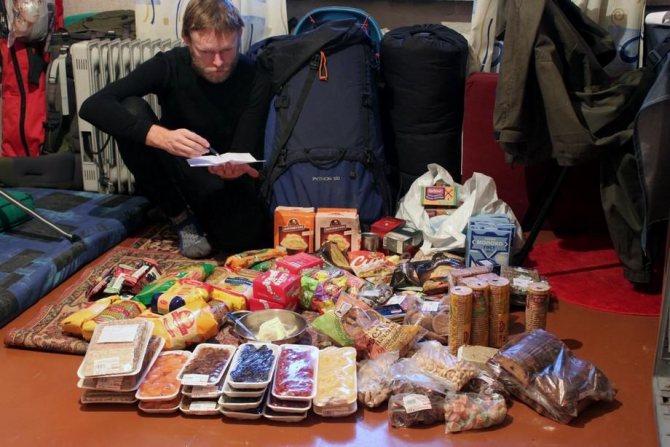
Camping sweets, easy to store and transport – sweets and chocolate. Sweets contain large amounts of sugar, which fills the body with calories that give strength. You can take some nuts and a jar of condensed milk. Don't forget about tea leaves.
Choosing a place to stay
Choose the place where you plan to spend the night and arrange it before dark. The following requirements are imposed on it: * You should stop for the night where there is elevation, there are no hollows, ravines, or dry river beds, which can flood the parking lot if precipitation falls. You should not stop under shore overhangs or large trees. * Find dry wood suitable for starting a fire. They should last all night. * Set up for the night closer to a body of water. It's good when it's flowing.
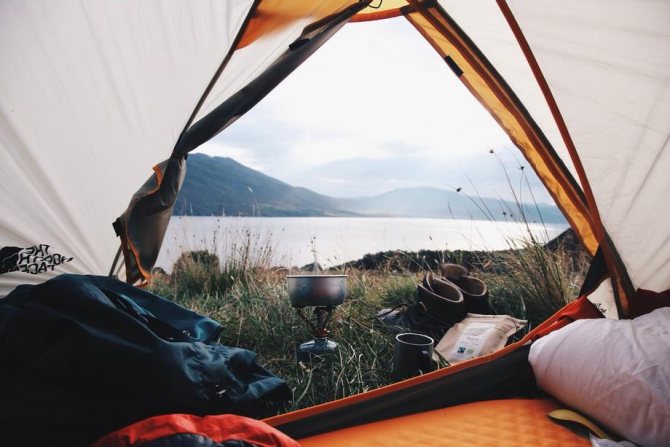
Spending the night in the forest takes place around a fire, so the next stage of preparation is to find a place suitable for it. You can make a fire in a hole or small depression. In their absence, a turf layer is removed from the ground, the area of which should exceed the size of the hearth.
The area is covered with large earthen lumps with the vegetation facing down. At a distance of one to two meters from the fire, all twigs, leaves and dried grass are removed. It is especially important to do this in dry weather with above-zero air temperatures.
You can cook food on a regular fire, which looks like a hut or a well. If you just need to spend the night and warm up, the fire can be built according to your own preferences.
A convenient option for cooking while camping is the “Finnish candle”.
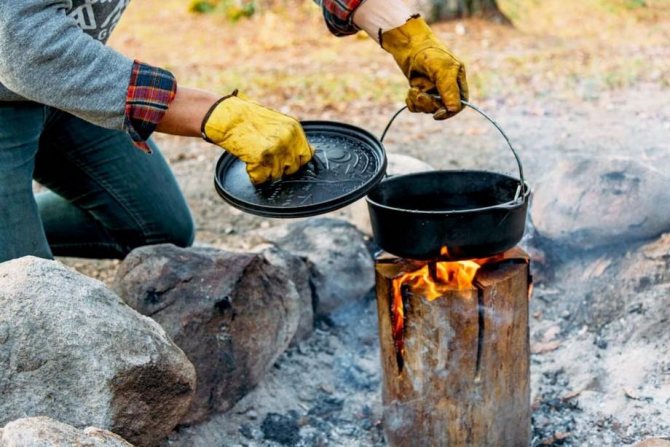
Reports from Katya and Sasha
I’ll tell you here about our weekend hikes in winter with a 1.5-2 year old child - how we dressed the child, how we slept in a tent and personal feelings. The winter of 2016-2017 was normal for St. Petersburg, the temperature mostly stayed around -10 degrees, so we spent almost the entire weekend in the forest with a tent. The post was written based on the results of these small trips.
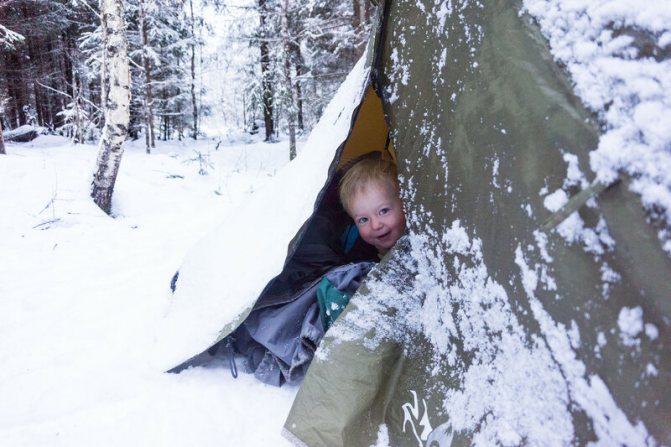
I honestly admit that we had to spend the first winter season in the life of our son Vitalik, which fell between 8 and 11 months, without hiking. No matter how enthusiastic we were, it didn’t work out. The fact is that at this age our child was interested in interacting with the world only in the most direct way - touching everything with his hands and always eating a little. Deprived of this opportunity, the child was sad, in the sense that within five minutes on the street he began to scream like crazy. Therefore, not only was there nothing to do with him in the winter forest, but it was simply impossible to go out for a walk. There is snow all around, he can’t walk, he categorically refuses to wear mittens... So I spent that winter under brutal house arrest, not counting a 2-week hiking trip to Cyprus, where the child had room to crawl and had something to eat (earth, stones...) at rest stops.
Our next winter also started sadly. Like many families, we began to get sick. Even before the new year, Vitalik and I managed to suffer two severe acute respiratory viral infections twice. It's not surprising when everyone around you is sick. But during the New Year holidays we went on a bike trip to the south (“New Year’s bike tour in Andalusia with a child”) and gained strength there. And the very next weekend after the hike, without wasting any time, we went into the forest with a tent. And then they did it regularly. And surprisingly, over the next 2.5 months of winter we only got sick once, and then only mildly. This is how winter nights in a tent turned out to have a powerful hardening and therapeutic effect for the whole family!
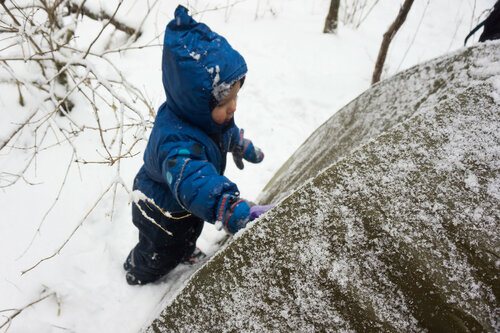
A child helps clear a tent of snow that has fallen at night.
Emotions When you sit in your apartment in winter and look out the window, going into the forest with a tent can seem like some kind of incredible torture. On playgrounds or in the park in winter, I personally can walk for a maximum of 2-3 hours, no matter how warmly I dress, and then I just start to freeze to death and generally lose consciousness. But two days entirely in the forest, with walking gear for parents (10 kilometers a day) and little adventures, evening gatherings by the fire, spending the night in a tent and all the winter forest beauty - this is a completely different matter. They give a real boost of joy, and the cold feels completely different! So between weekends, when I, along with other mothers, sadly chattered my teeth on the playground, the thought that in a few days we were again going into the winter forest with a tent, warmed me, and did not freeze me. And in general, thanks to the hikes, the winter was more fun. I spend a lot of time at home alone with my child, Sasha comes home from work late, there is no help from outside - it’s easy to get sad. And it’s much more fun in the constant bustle around the hike!
Surprisingly, the child also really enjoyed our winter hikes. In the winter forest, he was almost always in a great mood and endured inconveniences like changing diapers in the cold without protest. I even sometimes think - maybe the way I spent my pregnancy played a role? The second half of our pregnancy occurred just in the winter, and despite all the difficulties of this period, we constantly went on such two-day hikes through the surrounding forests (for example, “Winter pregnant hike through the forests near Susanino and Semrino”). And under the influence of “pregnant hormones,” I then simply received great pleasure. Now Vitalik likes it too. After all, even for seasoned adults, winter sleepovers often fall into the category of “heroism,” but here a child of one and a half years old feels great! However, what also matters here is that during the hike we are completely and completely open to communication with the child, we do everything together. And at home, adults are always busy (well, that is, always trying to do) their own things...

A child collects branches for a fire Temperature The most common question is: at what temperatures can you drag a small child into the forest? We personally traveled down to minus five in the forecast, which actually meant up to minus ten. According to our observations, winter forecasts in clear frosty weather in the Leningrad region regularly miss the estimates by five degrees, while in cloudy near-zero weather they are more or less accurate. Fortunately, this winter the weather was within our tolerance limits most of the time this winter, so we were able to hike without restrictions. It was colder than -10 degrees; my child and I did not spend the night in a tent. But in such cold weather, the problem is not in spending the night, but in what to do during the day - how to keep a child from freezing in a carrier while his parents are dragging him, and how to keep his parents from freezing while the baby is frolicking for an hour or two at a rest stop.
But in general, this is all, of course, individual. In addition, Russia is large, and I suspect that residents of different regions react differently to frost. And it feels different. For example, I remember that during my childhood in St. Petersburg (then Leningrad) at -18, children didn’t even go to school, as it was a natural disaster. And somewhere in Siberia -20 in winter is the most common thing.
Equipment We started the winter hiking season unexpectedly, on the November holidays. The cold came suddenly, and we did not want to give up the backpack we had already packed (for the autumn weather). We went into the forest as is, despite -4 turning into -7. I wrote a separate post about this hike, “Winter hike to Kiperort with a stroller.” So we simply wouldn’t have time to buy any additional equipment. But it turned out that nothing special was needed.
We have a simple three-person tent Equipment Cetus-3. One of the two half-mesh entrances is sewn up with fabric, the other remains a mesh. We have one Salewa -1 sleeping bag, the other Deuter -4, fastened together, and we go with them on all our hikes. Our rugs are 16 mm, produced by the Izhevsk plant. I sleep in the middle, like the coldest one. Vitalik sleeps on the side of me, quite separately, since at night I vitally need to rest from him. At one and a half years old, he is still quite “fat” and does not freeze in his sleep. He is wearing a fleece overall, and my down jacket separates him from the wall of the tent, which he likes to cuddle up to. Sasha sleeps on the other side of me, trying to be closer so that I can be warmer.
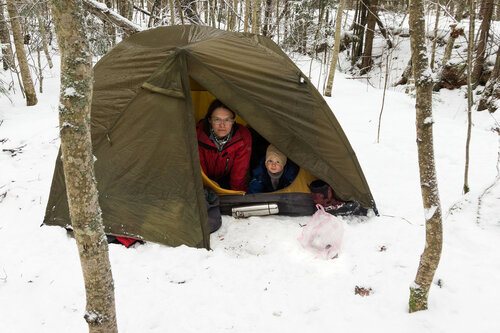
In general, I don’t see any problem at all in organizing winter overnight stays in moderate frost. At least with a child, at least without. We ourselves used autumn sleeping bags simply because we were too lazy to buy others, but sleeping bags are sold at least for -20! You can also get a warmer tent, take more rugs, and dress warmer.
The only peculiarity of overnight stays with a small child is night feedings. At one and a half years old, Vitalik still needs this with all his might. A fleece with a special cutout helps me with night feedings, but I still chatter my teeth when I stick out of the sleeping bag and feed the baby in a tent that has not yet warmed up. However, this is not at all fatal. By the way, Vitalik sleeps just fine in a tent in winter, for 11 hours or even a little more, whereas at home our nightly sleep is limited to 8-9 hours. So, camping with a tent is also an opportunity for me to have a good sleep and lie down once a week!
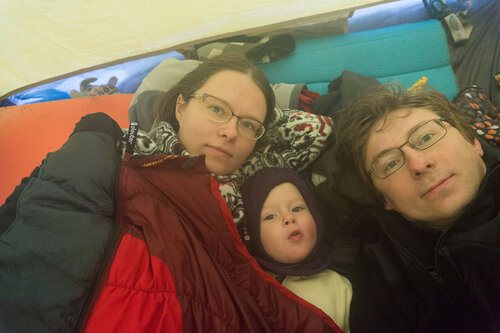
In the morning, Vitalik likes to move between us. Clothes for the child During the day, our child was dressed in winter overalls from the Lenne (=Kerry) brand, with 330 g of insulation. It is really warm, and also has a membrane, so it is suitable for both frost and wet snow. Great stuff! The only pity is that manufacturers change their model range all the time, so it is unknown whether it will be possible to buy the same one in a year. I buy almost all of my child’s clothes second-hand, so this overalls also cost us minimally.
On our feet we wore either the famous Kuoma boots with a thick woolen toe (otherwise it’s cold in them!), or Demar snow boots. They gave us both, so I didn’t even have to agonize over the choice. The Demars turned out to be not only warmer, but also with some kind of membrane - they practically do not get wet throughout the whole day, even in very wet snow.
At night we put the children's clothes in sleeping bags so that they would not get damp and would dry out as much as possible. Carrying a child The simplest and most obvious way to transport a child who is not yet walking on his own is a stroller. We went through several PVDs like this. If the stroller has four normal wheels, like our ancient Emaljunga (pictured below), then it is quite possible to walk with it on road ruts and on flat, shallow snow. Our friends use a Thule children's trailer with a large front wheel for the same purpose or attach a ski to it. I also know that people go with sleds, but with them everything is more difficult. For ourselves, we didn’t see the point in bothering with a sled if we could walk along the paths with our stroller, but we still couldn’t go straight through the forest with a sled. All these methods are good because the child does not have to be dragged on his back and, what is more important, the baby can be covered with a sleeping bag.
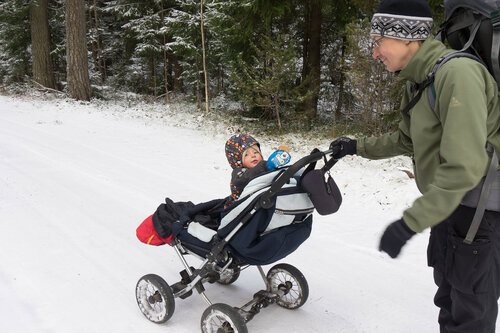
Winter hike with a stroller
But we much prefer to travel with a child in a backpack, as it gives complete freedom of movement. And our baby prefers a backpack carrier more than any other way to “ride” on his parents. In this format, you have to bear more on yourself. Our child now weighs about 13 kilograms, plus 1.5 kilograms of winter clothes, plus 3.5 kilograms of the carrier itself - we get a minimum of 17 kilograms for the mother. Everything else (about 20 starting kilograms) goes into dad’s backpack. Since we used to go on independent hiking trips with our child for a week or more, this doesn’t bother us much now. That is, out of habit, my shoulders hurt, but from experience I already know that carrying a carrier has a rather positive effect on the condition of my back, so I calmly endure it. And Sasha, after long hikes, doesn’t consider a two-day backpack as cargo at all. It’s impossible to go without dad for an overnight stay in this format, but I don’t have such a task.
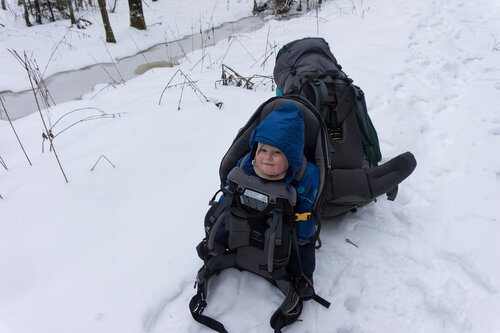
Our cargo A big disadvantage of carrying a backpack is the inability to warm the child if it is cold. In the cold below about -4, the child in the carrier gradually froze. And when he froze, he refused to get out and move, so it became a vicious circle. The rain cover partially solves the problem. We also adapted to wrap the baby in a sleeping bag over the carrier. It was uncomfortable, the sleeping bag often fell off, and it was hard for me to carry, but at least the child did not complain about the cold. In general, in near-zero weather you can walk safely with a backpack-carrying bag, but in colder weather it is better to put the child in a stroller/trailer/sleigh and cover it well there.
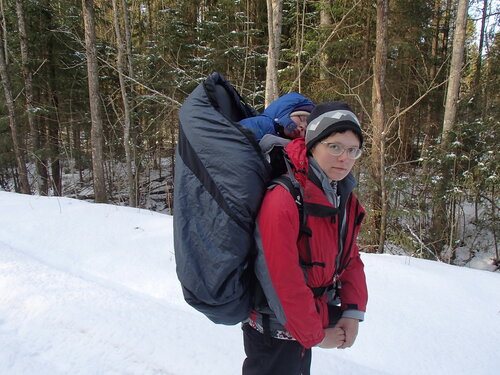
With a wrapped sleeping bag
If the child is still quite small or thin, then there is another option to carry him in an ergo-backpack or sling. I was never keen on slings, and our 1.5-year-old baby in thick winter clothes was already too fat for an ergo-backpack. So I constantly traveled around the city with him in an ergo-backpack, but I dressed him easily. And there’s no way to go camping without warm clothes...
Since there was little snow this winter south of St. Petersburg, we managed to walk without skis. When there is more snow, you can walk along well-worn paths and clearings in the forest. I have very little experience skiing, so I wouldn’t risk making my way along forest roads with a child on my back... But for those who know how, why not? 

Conclusion If there is no severe frost outside, going camping with a small child on the weekend is not only realistic, but also fun and good for the health of the whole family. The main thing is not to be afraid and try.
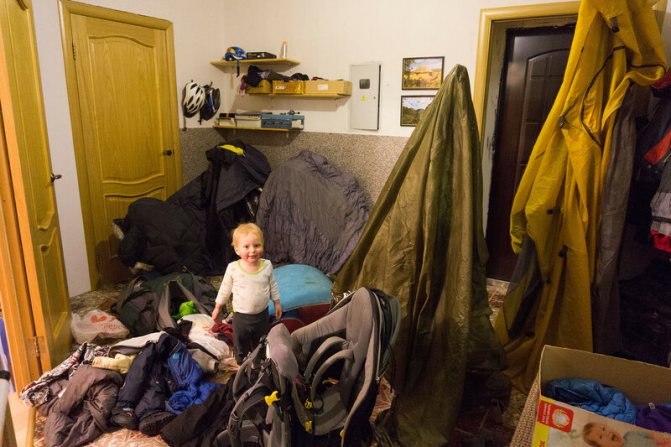


| Reports on our winter activities with children: |
| Winter hike to Kiperort with a child (1 year 6 months) November 4-6, 2017, 40 km Our first ever weekend hike with a child at sub-zero temperatures. With a stroller! |
| Winter weekend hike near Vyritsa with a child (1.5 years old) February 4-5, 2020, 28 km The route began and ended at Poselok station. First we crossed Oredezh on the ice, then walked west along its southern shore, crossed Oredezh again and walked around the clearings to the Settlement. There is little snow, everything is frozen. The child was wearing a Deuter Kid Comfort backpack. Overnight just in the forest in the middle of the route. |
| Winter weekend hike along clearings from Susanino to Semrino with a child (1.5 years old) March 4-5, 2020, 19 km The route ran from Susanino to Semrino along clearings from the west of the railway. There is little snow. On the first day it was +3, at night -7, the second day -5. The child was wearing a Deuter Kid Comfort backpack. Overnight just in the forest in the middle of the route. |
| And another new post on the same topic: |
| Our Fall/Winter Hiking Gear with a Baby - An updated list of everything we pack for a weekend backpacking trip in the fall and winter with a baby who isn't walking on his own yet. With specific weight figures. |
Preparing the bed
Having put the pot of soup or porridge on the fire, they proceed to preparing the sleeping place. In the cold season, you need to clear the area of anything that could catch fire and make a fire. When the fire goes out, you need to remove the coals, re-clean and make a flooring of branches or spruce branches. A tent is set up on top.
Those who are going to spend the night in the forest in winter are recommended to have a hacksaw or a compact hatchet. The tools will allow you to prepare firewood for the fire and chop spruce branches on which to arrange a sleeping place.
When you have to spend the night in the autumn or summer forest, and there is no tent, a place to rest is prepared from scrap materials. Thick and thin poles, branches and spruce branches, a sleeping mat or a sleeping bag are placed on the ground.
The sleeping place is located so that sparks do not fly onto it. The head should be on the leeward side. To conserve heat, make a wall or canopy from branches. If you have a sleeping bag, the bed is arranged even further from the fire source. When you have to spend the night near a pond and there is a boat, a temporary forest bed is set up in it.
In cloudy or rainy weather, the tent will be replaced by a canopy. When there are no trees standing at a short distance from each other, stakes are driven into the ground and any waterproof material or rope is tied between them, on which branches of trees, pines, and fir trees are laid.
Go to bed only in dry clothes. If things get wet, dry them by the fire.
Overnight in the forest in winter with a tent
Set up a sleeping place in a coniferous forest or pine forest, where it is dry and not too windy. The tent is placed on lightly trampled snow, and the inside is lined with a thick polyurethane mat to protect against the cold coming from below.
A simple tourist tent without insulation is covered with polyethylene on the outside and sprinkled with snow for hydro- and thermal insulation. Make sure that the weight of the snow does not damage the frame. Winter tents are not additionally insulated.
Spending the night in a winter forest in a tent is convenient if you have a sleeping bag. They lie down in it, taking off their outer clothing. A comfortable suit for sleeping will be thermal underwear that allows moisture to escape and prevent hypothermia.
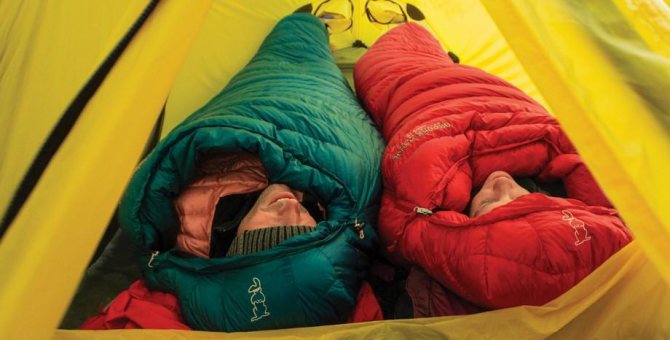
There is no room for open fire in the tent. To heat the sleeping area, stones heated over a fire or a closed gas burner are used.
A trip to the Forest on a winter night... (Story)
Hello, dear masters, buyers, subscribers and all, all, all the inhabitants of the Masters Fair! Thanks for stopping by
I want to share with you a story, a note about a small trip. We will talk about my little adventure, about how one winter night I went into the Forest alone... This is true, everything that is written here happened to me once. In this story I tried to describe all my sensations, feelings and experiences, as far as it was even possible to describe...
This is my first story in this genre, so please do not judge too harshly. I'm not a writer, I'm just learning))
I will be glad if you like it!
_________________________________________________________________________________
Perhaps one of the craziest things I have ever done in my life was to go alone into the Forest. At night. In winter.
This was last year 2020, at the beginning of February. We arrived at a dacha near Moscow with our father and brother. In the village where our site is located, there are dachas - areas with houses intended for summer holidays, so most of these houses are not heated and are not suitable for living in the cold season. Consequently, in winter almost no one lives in the village; maybe there are at most ten “residential” plots.
Our house is just such a rare exception. At one time it was insulated, a powerful stove was installed, turning the dacha into a full-fledged country house. So, in theory, you can safely live in our dacha all year round. So the family comes there periodically on weekends and on New Year's holidays. To my great regret, I appear at this dacha extremely rarely - work, study and four-legged animal friends, which I cannot leave, unfortunately require sacrifices.
And here we sit on a long winter evening in the house, the three of us. Quiet, warm, cozy; The wood stoves are crackling, there is tea on the table, the TV is muttering something, everyone is busy with their own business - an idyll. But... Something is missing. I don’t even remember how this crazy idea – to go to the Forest – came into my head. However, it somehow arose, and I voiced it.
Need I say that no one supported my enthusiasm? My father and brother just looked at me in bewilderment and mentally twirled their finger at their temple. Well, I understand them, this is not surprising, such and such a reaction. It was hard to expect another. Who in their right mind would drag themselves into the Forest in winter, and even at night? Will he drag himself instead of sitting and warming himself in the house, drinking tea, and then going to the steam bath? And what is there to do there now, in the Forest? Why look for adventures to the fifth point?
This is exactly what was written on their faces. This is exactly what was voiced to me.
But such an answer did not diminish my determination at all, the ardor did not go away, because I was already fired up by the idea. Well, if you don’t want it, whatever you want. I silently left to get ready.
While I was getting dressed, my father came into the room. He stood in the doorway for a while, looked at my preparations, and asked, am I really going to go ALONE?! Isn't it scary? Do I understand that this is dangerous? You never know who you might bump into, and there’s so much snow, I can’t go into the Forest!
I didn't answer.
No one else tried to stop me - probably both my father and brother understood that it was useless. After getting dressed and taking a large lantern, I set off to do one of the most daring and crazy things in my life...
The photo shows a brick wall of our house; That's how the snowflakes sparkled on her that night. It's like the stars came down from the sky... ░
Before my “hike” I walked a little around our site, along the 12 acres that were dear and close to me since childhood. Quiet, very quiet. No wind, no voices of people, no barking dogs. The silence is absolute, the kind that only happens in winter far from big cities... It's frosty. The sky is covered with clouds. It must be snowing soon... It would be nice... I love snow, I really do. I love everything related to the coldest period of the year. In general, I am a winter person, I was born in the middle of Winter, and for me it was, is and will forever remain my favorite time of the year. In my entire life, I have never met a person who would love Winter as much as I love her... It’s a pity, a very pity. People greatly underestimate this wonderful time of year...
The photo shows part of our summer cottage, how it looks in winter...
For about ten minutes I walked along the lines - country “streets”, on both sides of which there are plots. Of course, I didn’t meet anyone. Firstly, it’s winter, there’s no one at the dachas. Secondly, it was deep night (it was already more than 11 p.m.), and therefore there shouldn’t have been anyone there. There was only one lantern for each street, and there was barely enough light to illuminate the entire streets. I had a flashlight with me, but I didn’t turn it on, because there was enough light from the snowdrifts, and my eyes had already gotten used to the darkness. As I expected, it soon began to snow, creating a kind of fog and as if encouraging me.
The photo shows the foggy distance of the street (dacha line). In the distance, near the Forest, a single lantern shines...
I reached the Forest in about 10 minutes, and stood thoughtfully for a while at the entrance. The thought arose: “Maybe, why bother with all this? What kind of crazy idea is this? To whom and what am I going to prove? And, most importantly, why?”
But once I decided, I decided that I had to act. And I took a step onto the path. Second step... Then again, again and again...
I walked along a forest path, winding among the trees that stood like dark giants, looking in silence as some madman invaded their territory. I still didn’t turn on the flashlight - I had seen enough, and I was walking, more guided by memory. Still, I knew this Forest quite well; in recent years I have come and studied it as best I could.
The walk was great and not hard at all. The snowdrifts under the trees were gigantic, a continuous sea of snow, but for some reason the path was not so heavily snowed, the snow was no higher than the knee, it was very comfortable in high felt boots. Snowflakes continued to fall from the sky, enhancing the beauty and mystery of the moment. The snow crunched under my feet, only the sound of my steps could be heard, which predisposed me to philosophical reflection. There was a joyful anticipation of some miracle. The mood is high. The sensations are unusual. So you go wherever your eyes look, your path is long. How long will it last? Where will it take you? What awaits you at the end of this path?..
The thought of the end of the road made me wonder how far I was going to go. Maybe it's time to go back, enough adventures?
But no, I didn’t want to go back. There was a desire to move in only one direction - forward. I decided to go to a certain place, one of my favorite places in the Forest. This place is a coniferous forest - a large strip where only pine and spruce trees grow. This is 700-800 meters deep into the Forest.
This took me about 20 minutes. After all, the Forest is, after all, winter. We had to avoid fallen trees, bumps and other obstacles along the road. Once again, philosophical reflections appeared in my head. After all, everything works out like in life when you go towards your goal and no one (and nothing) can stop you...
With similar thoughts, I reached the final destination that I had set for myself. She stopped in front of a high black wall of coniferous trees. Taking a deep breath, she stepped under their cover, under their darkness. Anyone who has been to such places knows that it is always much darker in a coniferous forest, since the wide paws of spruce and pine trees cover the sky. But I like it in places like this. I like this mysterious atmosphere of the dark Forest, I like the smell of pine needles. And they still ate my favorite trees, be that as it may...
I looked at the time on my phone. It was past midnight.
She stood there for a while. Silence. Dead. A crazy thought suddenly crept into my head: “Maybe further? What if we continue on our way? Why not? Here it is, the path, go and follow it...” However, she managed to stop in time.
Gradually, the determination began to fade. After all, it’s winter, night, Forest, I’m alone. Who knows... or who?
As if to confirm these thoughts, some rustling sound was heard behind me. Jumping in place in surprise, I immediately turned to the source of the sound. A few meters away from me, a wide pine branch swayed slightly. My heart was beating fast in my chest...
Yes, I won’t lie – it became really creepy for a short time. I immediately remembered and began to come to life in my imagination many terrible images from hundreds of books I had read and films I had watched. I remembered dozens of stories of maniacs from documentary programs. Maybe because of this spruce tree that stands a couple of meters from me, the Wendigo will now come out - the evil spirit of the forest, devouring people... Or Leshiy, the forest owner, will bring down his anger on me for such an unceremonious invasion of his kingdom... And you never know What kind of maniac can watch his victim in the forest at night?..
Imagination is such a thing that sometimes it can play a cruel joke on us. But this awareness... The awareness that I am alone for several kilometers, and if something happens, no one will hear my cry and no one will have time to come to the rescue... And I will disappear, I will disappear forever, and no one will ever find me...
She quickly took out a folding knife from the inner pocket of her jacket, opened it and put it in the outer pocket, but still did not remove her palm from its handle. I even turned on a flashlight that I didn’t need until that moment and began to illuminate the trees and everything around one by one, trying to understand what was happening... And I felt that the cold tendrils of fear were beginning to entangle me from the inside, and panic was slowly enslaving my consciousness, not allowing me to calm down and think sensibly. Yes, at some point I was really ready to run away from the Forest screaming and shamefully...
Fortunately, I managed to cope with myself and win this internal struggle. I managed to pull myself together and start thinking coldly and sensibly again. Moreover, a few meters away from me this sound was heard again, this quiet and barely audible rustling... I directed the flashlight beam in that direction, expecting to see anything (and anyone) I wanted...
But... I didn’t see anything special. Only crumbling snow, but this time from a spruce branch. Actually, nothing terrible happened. It was just that the branches of the trees, unable to withstand the weight of the snow pressing on them, periodically dropped snow “caps” down. The snow was falling, and the branches continued to sway for a while. This explained the rustling noise. No horror or mysticism – just the laws of physics, that’s all. It’s a completely natural situation for Les, it’s quite natural that something like this happens from time to time. I think that during the time that I walked here, to this place, snow fell from the trees more than once, but because of my own steps I could not hear this subtle rustling...
With a clear conscience and heart, I turned off the flashlight and waited until my eyes adjusted to the darkness of the night again. Then she went up to a tall spruce tree that grew next to the path - my tree - and hugged it, pressing her cheek to the rough trunk that smelled of fragrant resin. She froze and closed her eyes...
And then... then came happiness. So huge and all-consuming... I'm not sure I can describe it in words. Spruce, pine, snowdrifts. And not a soul for several kilometers around. It was so great to be here, in the winter Forest, in this kingdom of trees, snow and silence. And the silence was absolute, only rarely, rarely interrupted by the rustle of falling snow. This kind of silence is often called “dead.” You will never find or experience something like this in the city. And what to hide, many people don’t like such silence, it scares and unnerves them; they feel uncomfortable with such loneliness.
That's just not the case with me. I felt like I was part of this huge and amazing world... Neither loneliness nor silence around me scared me. I was happy to become related to this world of the winter Forest.
There was happiness, yes... And there was also pride. Pride from the knowledge that I did something that not everyone would dare to do. That I found the strength and courage to do it alone. That I was able to overcome my fear and emerge from this struggle as the undisputed and only winner.
It’s hard to say how long I stood there like that. After a while, I sat under this spruce, leaning my back against it, and looked into the distance, listening to the silence, and everything inside gradually calmed down and healed. This is sometimes so necessary - not to run anywhere, not to rush anywhere, to slow down, stop and look around, without worrying about anything or thinking about anything. Let go of all thoughts and worries and just contemplate this beautiful world...
I sat like that for a long time. I could continue to sit for as long as I wanted, as it seemed to me then. At such moments, the sense of time disappears. But after some time, one of the men called, worried and asking if everything was okay with me and why it was taking me so long. No wonder they were worried. The phone screen helpfully informed me that it was already 1:02. I spent more than an hour in this thicket... She said that I was going back and that I would be there soon.
Reluctantly she rose to her feet, stood on the path again and walked along it a couple of steps in the opposite direction. With slight sadness, I looked back and took a farewell glance at the trees, tall spruces and pines, which still looked at me with silent wisdom and calmness. For some reason, this place became even more beautiful in my eyes and even more dear to my heart...
The walk back was like in a dream. There was some feeling of unreality, and gradually a feeling of boundless love came over me for every tree that I met on the way, for every snowflake that fell from the sky that night. Love, happiness and joy. And harmony within. And inspiration. At that moment, it was as if wings had grown, as if a second wind had opened. This is probably why I did not feel physically tired from the long walk in the snow. Although it should have been, logically...
After some time, the light of a distant lantern began to break through the wall of trees, the one that, standing by the Forest, alone illuminated an entire street, an entire dacha line... Again I remembered several books I had read, for example, the Chronicles of Narnia. There, too, there was a lamppost as a kind of border between worlds... And this lantern that shone in front was a kind of guideline for me, I walked towards its light, as if spellbound... It seemed that it was a kind of border between the worlds, our ordinary world and the winter world Forests…
In the photo there is a street lamp, which you can see far in the Forest, and you can walk towards its light, as if to a lighthouse or a guiding star...
Came out of the Forest. Snow was still falling quietly from the sky. This only intensified the feeling of “wings” growing behind my back. This kind of weather is a joy for me, it always inspires.
In the photo - this is how snow fell from the sky when I came out of the Forest...░❆
I turned again to face the Forest, which still towered above me like a silent and majestic wall. Nothing has changed (and what was there to change?).
But... Something changed in me, something inside myself. I became somehow richer mentally, as if I had blossomed from within. From somewhere unknown, new forces appeared that had not been felt before. The mind cleared and the awareness came of those things that I did not understand before. It was as if during this short walk I had become older, wiser and stronger. The forest, in some way unknown to me, managed to change me, and change me for the better.
Now, remembering my winter adventure trip, I don’t regret anything. For me it became one of the brightest and most amazing events in my life. I will undoubtedly remember this night for the rest of my life. Maybe it was madness, but what...
Crazy things are very necessary in life. Like any other actions, they make us who we are; they temper us, force us to look at everything differently. And life without them is hard, boring, uninteresting, gray and sad.
My “madness” brought me much more than just pleasant memories. It influenced me greatly. I have never regretted that “crazy”, according to many, act. And every time I remember this adventure on that winter night, my heart becomes a little warmer, my soul opens up and an involuntary smile appears on my lips.
13.02.2019.
It’s a dangerous thing, Frodo, to step outside the threshold: once you step on the road, if you give free rein to your legs, you don’t know where it will take you.
(c) J.R.R. Tolkien, "The Lord of the Rings"
Winter overnight without a tent
Spending the night in the forest in winter without a tent requires the construction of a durable shelter that will protect from wind and precipitation. At air temperatures down to -15 degrees, a group of several people can sleep in a canopy that is closed on only one side. For a solo traveler, a snow trench will serve as a resting place.
An overnight stay in the forest for one person is arranged as follows: * The snow is cleared so that the ground is visible. * The flooring is made from coniferous tree branches. * A sleeping mat and a sleeping bag are laid out. * A rope is stretched over the sleeping area and tied to the trees. Spruce branches or tarpaulin are laid out on it and secured with snow. * A burner is placed in the resulting structure, or, in extreme cases, a candle.
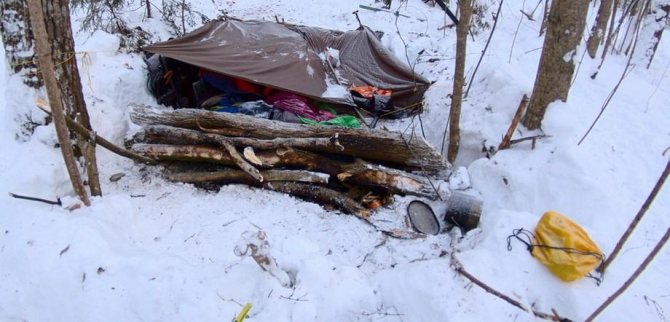
A company going on a hike in the forest overnight without a tent in winter can use a lean-to canopy. A fire is built near it, which will warm you up, give you light and help you overcome your fear of forest dwellers.
There are other ways to organize a sleeping place during the cold season: * erecting a snow igloo; * tunnel in a snowdrift; * inclined canopy under a fallen tree or on tripods.
Those who are haunted by the fear of freezing while sleeping should take care of the tent. Rest in the most comfortable conditions for a tourist will turn the path covered in a day into an interesting adventure, and not a test of strength.
What to take with you to the forest and orienteering rules
When going into nature, many people wonder what to take with them to the forest for a child or an adult, so that the walk leaves only pleasant memories. The specific set of things depends on the length of the route, the purpose of visiting the forest and the age of the travelers.
However, there is a recommended general list of what you might need on any forest hike.
Be sure to put the following in your backpack:
- Map or compass. Even if you know the forest very well, the risk of getting lost still exists.
- Means for igniting a fire - a lighter (preferably a regular one with gasoline), matches packed in cellophane, newspaper or a couple of sheets of paper.
- A flask of water. A supply of water is a must. The principle here is that the more, the better.
- Some aluminum utensils (mug, ladle, pot)
- Flashlight and extra batteries
- Repellents (spray or cream)
- A raincoat or cape that you can use if your hiking gets worse
- A small first aid kit with the most necessary medications
- Magnifier and folding knife
- Notepad, pen or pencil. You can take a bright marker to leave notes
- Whistle. It is good to hang it around the child’s neck so that he will give a signal if he lags behind the main group.
You can read more about the contents of a tourist’s first aid kit.

If you are organizing a children's some additional entertainment with you A ball, a player with children's songs, a book or your favorite board games will do.
Particular attention should be paid to clothing. It should be comfortable, layered and cover as much of the body as possible. In the warm season, ticks become more active in forests dominated by spruce trees and a lot of tall grass. In this case, you need to wear clothes with a high collar and a headdress. Tuck long trousers into socks or boots.
Nature orientation: basic rules

Pay attention and remember any landmarks that you come across in the thicket of the forest. They can be paths, streams, clearings, a nearby railway or populated area. You can leave marks with a marker.
Nowadays there are many different navigation applications for phones, but you need to take a regular compass with you into the forest. This is the most reliable device that makes it easier to navigate on any terrain and does not require charging. However, despite the apparent simplicity of this device, few know how to use it correctly. It will also be useful for you to familiarize yourself with the information: “Orienteering rules”.
There are a wide variety of compasses on sale (magnetic, electronic, gyrocompass). But for hiking, the usual tourist option is preferable. In it, the magnetic needle located in the center of the device will always point north.
Be sure to practice determining the correct direction using your navigation device before traveling. Check its accuracy regularly. To do this, you just need to bring an ordinary metal object to the compass. After you remove it, the arrow should return to its original position.
Remember that the device readings may be erroneous if there is interference from a telephone or radio nearby. In addition, the presence of nearby railroad tracks, cars, metal structures or iron ore may have an impact.
The device should be held horizontally. When checking directions with a tourist map, place it in the center of the guidebook.
Lifehack of the Ministry of Emergency Situations: so as not to get lost in the forest
How to determine the direction of the world by the Sun?

The easiest way to find out where you are going is to use the location of the Sun's shadow. The natural star changes its location in the sky at different times of the day.
It is highest at noon, and is located on the south side during this period of time. When the sun is at its zenith, the shadows from objects will be the shortest of the entire day. In the forest, it will help to determine the northern direction of the shadow of the trees.
If you are in a clearing, then use any stick or branch. Stick it into the ground. The shadow cast will point north. To avoid distortion, the surface must be flat.
You should know that the sun shines from the east at approximately 6-7 am. At about 10 o'clock it will move to the southeast, and at noon (12-13.00) it will be in the south. In the evening hours you will find the celestial body in a western direction.
Orientation by sights and natural features
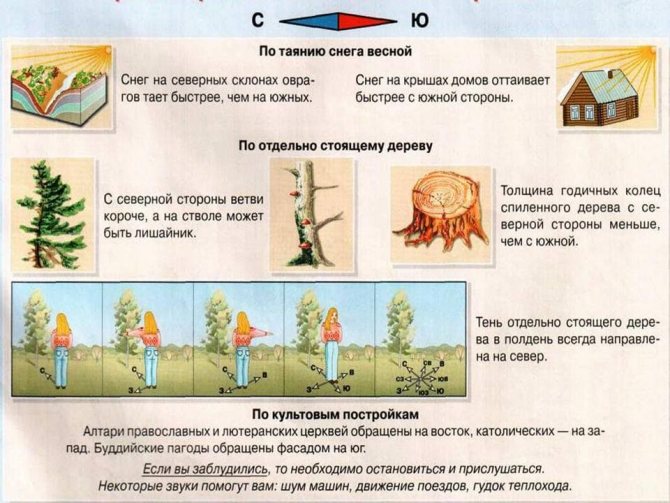
To determine north in an unfamiliar locality, you can use various landmarks or religious buildings.
In Orthodox churches, the upper end of the short oblique crossbar on the eight-pointed cross always faces north, and the lower end faces south. The bell towers and the entrance to the church most often face west.
The entrance doors of synagogues and Muslim mosques are located on the north side. Buddhist buildings face south. Take a closer look at residential painting. It usually fades and cracks faster on the south side.
In wooded areas, pay attention to tree trunks and rocks. The north side will have the most moss. Ants always build their “houses” on the south side near a tree. The steeper slope of the anthill is from the north.
Some plants reach towards the sun with their inflorescences. If you are in a tree-shaded wilderness, look at the plants or flowers. In the morning they will lean more toward the east, at noon they will look south, and in the evening the flowers will lean toward the west.
When passing large stumps, take a closer look at the rings. On the side where the distance between them is greater is south. On the north side, the annual rings will taper towards each other.
The most important thing is that when going on a hike in the forest, you need to take a good mood with you and plan your travel route in advance.
You will also find very useful information about
“Registration of tourist groups“
